Interruption
How to interrupt the everyday flow of life with grassroots public installations to awaken citizens and get them involved in claiming what is theirs?
Using everyday common objects, like a grinder to eject a person from its chair, building a medieval like guillotine to cut a theatre chair in two, set in the window of a theatre that the authority chose to close down without any justifications to their actions, or constructing a seesaw (1996, way before Mexico) on the locker of a gate that cuts the playground off a public garden preventing the kids from playing.
What about our air rights? A space that is ours as much as the ground?
Erecting a 12 m Basket-ball net in a 90 cm passageway between 3 buildings, in the densest area of the city, making sure that all drivers on the motorway; the motorway that was erected to split the neighbourhood in the first place, gets a sense of this density. While setting a chair to go up the electric poll over an illegally so called “security belt area” to protect a politician is a violation of our everyday rights. Moving to marking the extreme privatisation of what used to be the Vendome stairs, a public stairway for all the youth and a space for them to hang out without having to spend any money, ripped away by a politician real estate project in Mar Mikhail Area. Not to mention the lack of nature and green spaces that are getting scarce each year…
Keywords: claiming citizens’ right to the city, ready-made, public, activism, appropriation. learning through play. Interruption movie concept & production: Rana Haddad, Taha Barazi, Tara Kanj, Soraya Hammoud, Mohammad Nahleh.
Using everyday common objects, like a grinder to eject a person from its chair, building a medieval like guillotine to cut a theatre chair in two, set in the window of a theatre that the authority chose to close down without any justifications to their actions, or constructing a seesaw (1996, way before Mexico) on the locker of a gate that cuts the playground off a public garden preventing the kids from playing.
What about our air rights? A space that is ours as much as the ground?
Erecting a 12 m Basket-ball net in a 90 cm passageway between 3 buildings, in the densest area of the city, making sure that all drivers on the motorway; the motorway that was erected to split the neighbourhood in the first place, gets a sense of this density. While setting a chair to go up the electric poll over an illegally so called “security belt area” to protect a politician is a violation of our everyday rights. Moving to marking the extreme privatisation of what used to be the Vendome stairs, a public stairway for all the youth and a space for them to hang out without having to spend any money, ripped away by a politician real estate project in Mar Mikhail Area. Not to mention the lack of nature and green spaces that are getting scarce each year…
Keywords: claiming citizens’ right to the city, ready-made, public, activism, appropriation. learning through play. Interruption movie concept & production: Rana Haddad, Taha Barazi, Tara Kanj, Soraya Hammoud, Mohammad Nahleh.
Interruption / Description
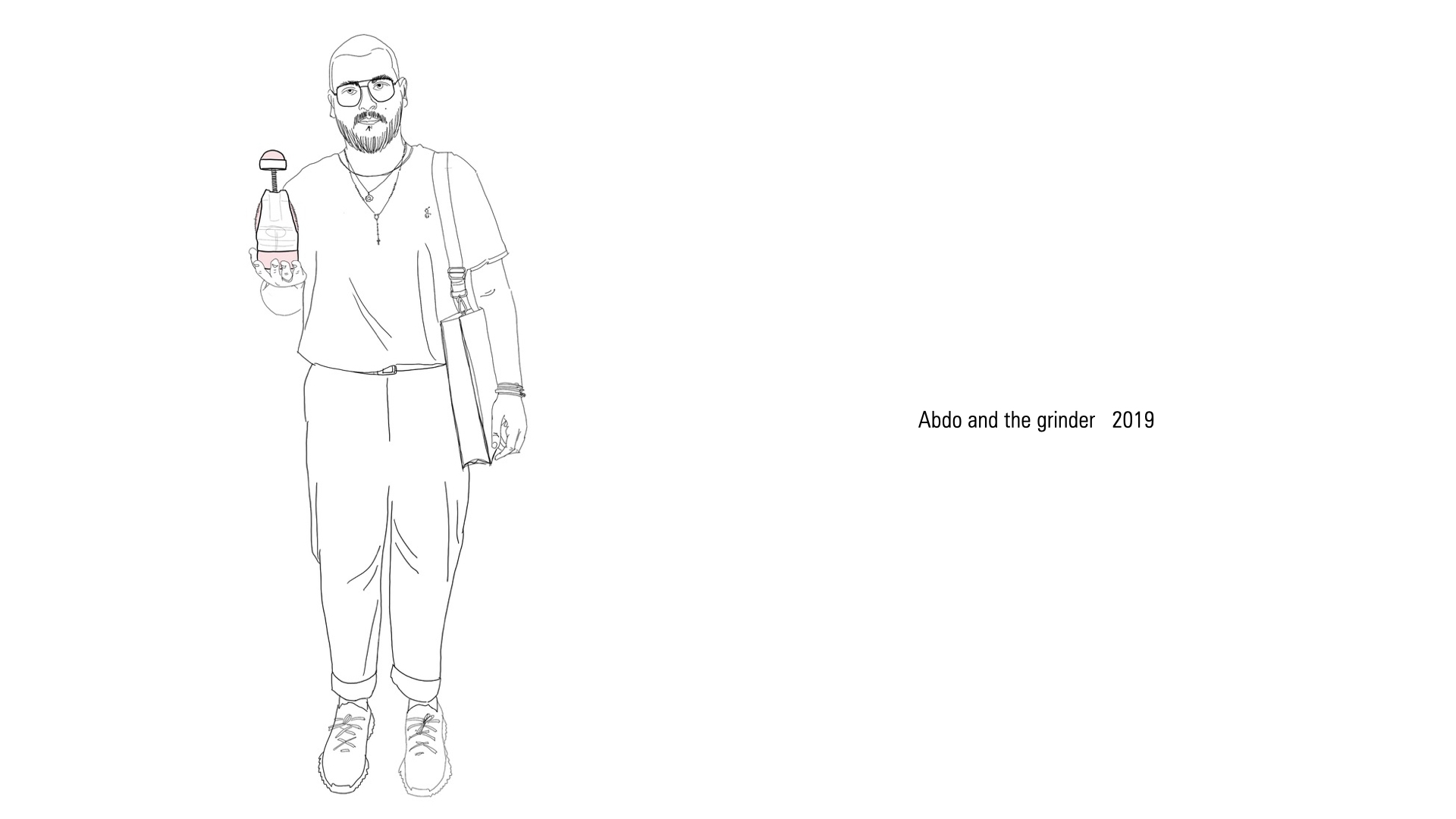
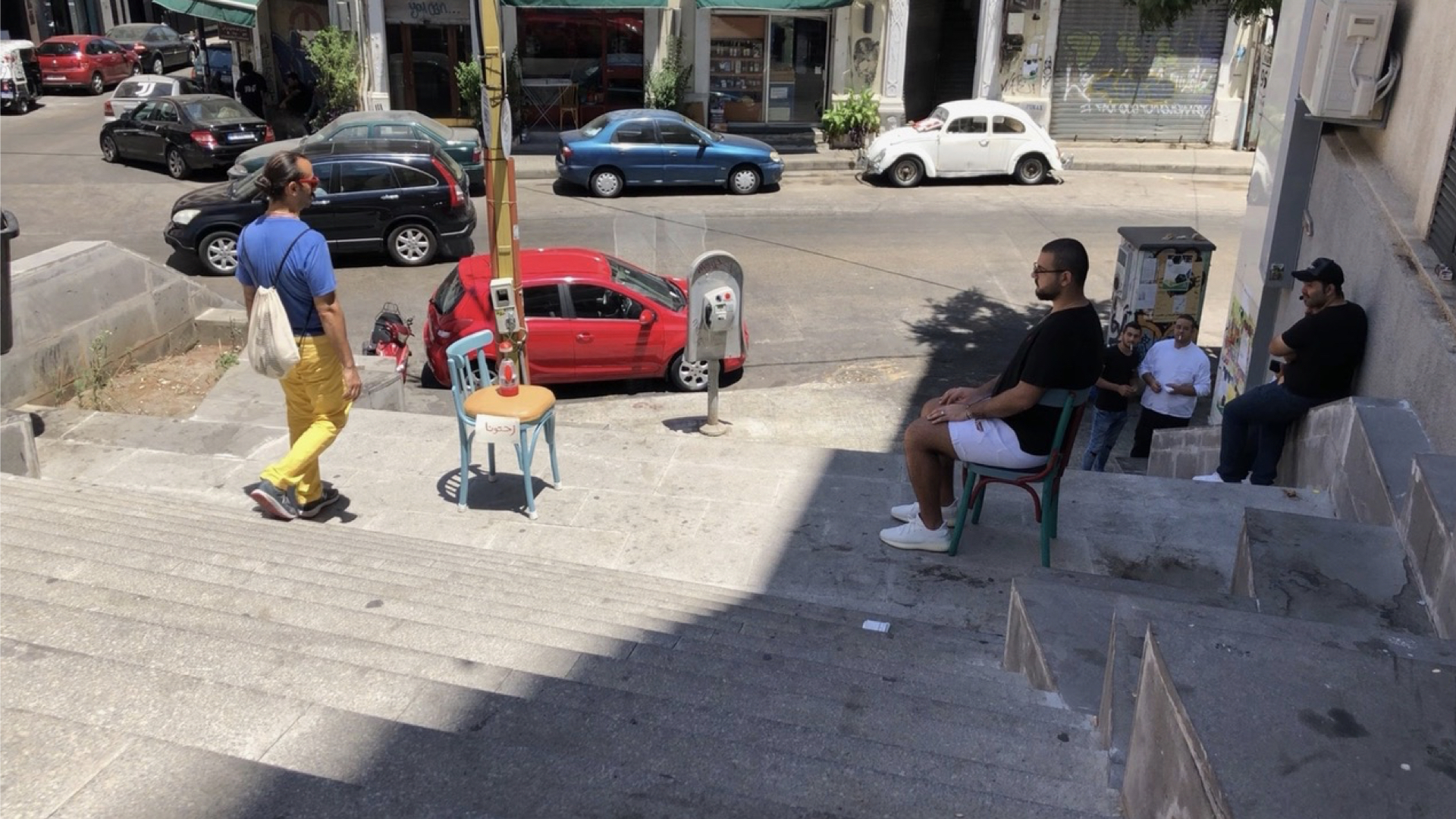
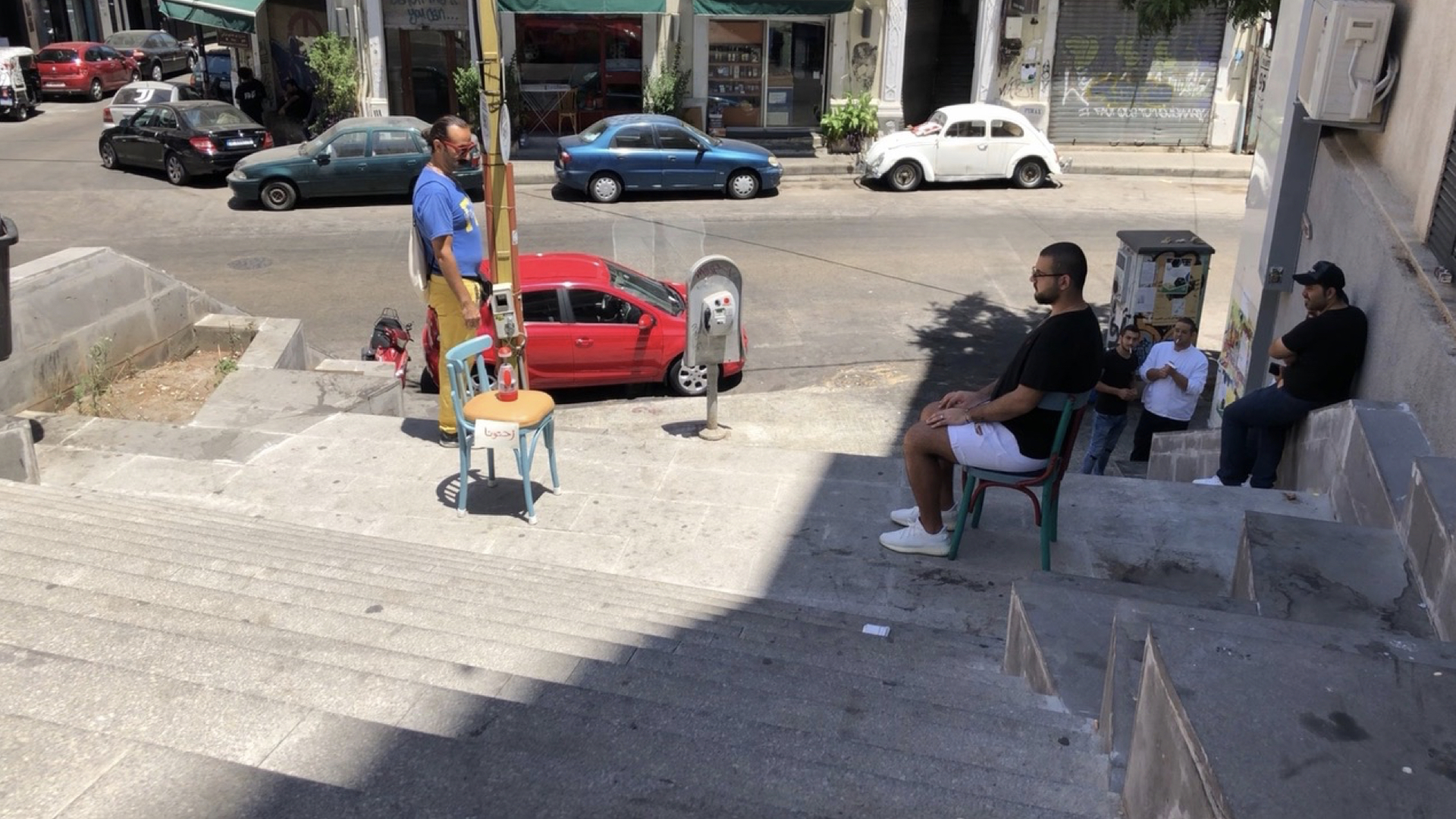
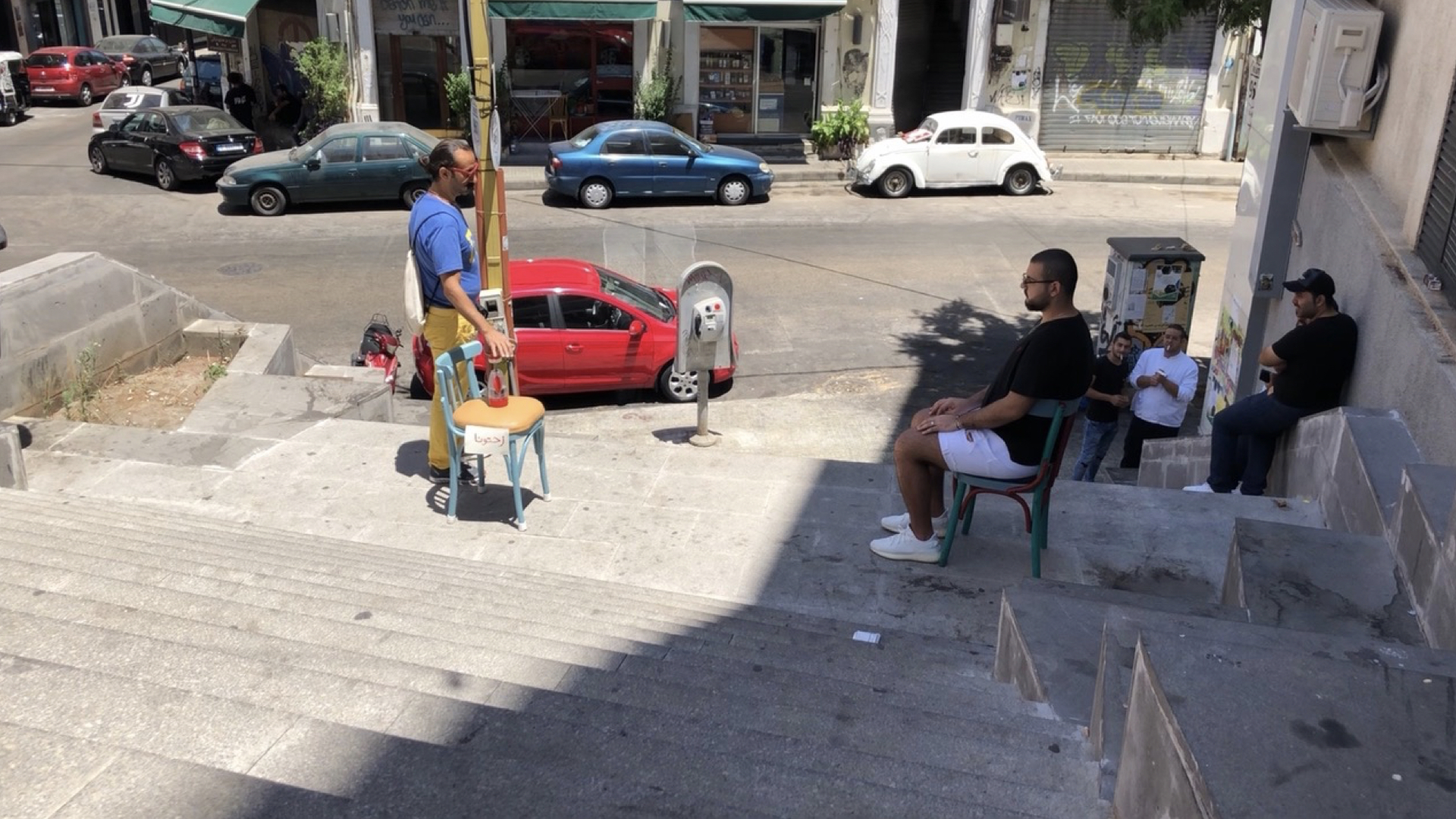
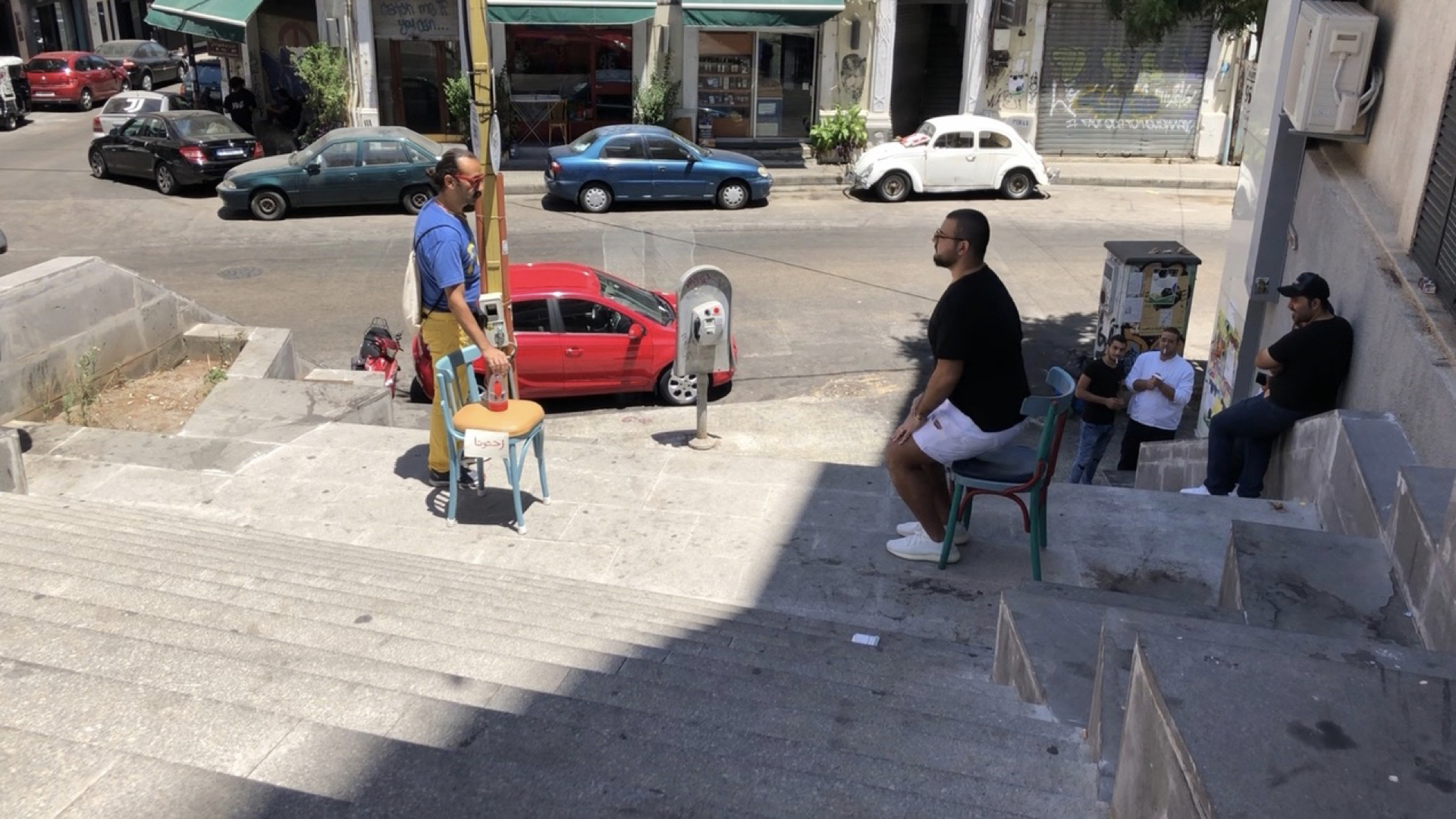
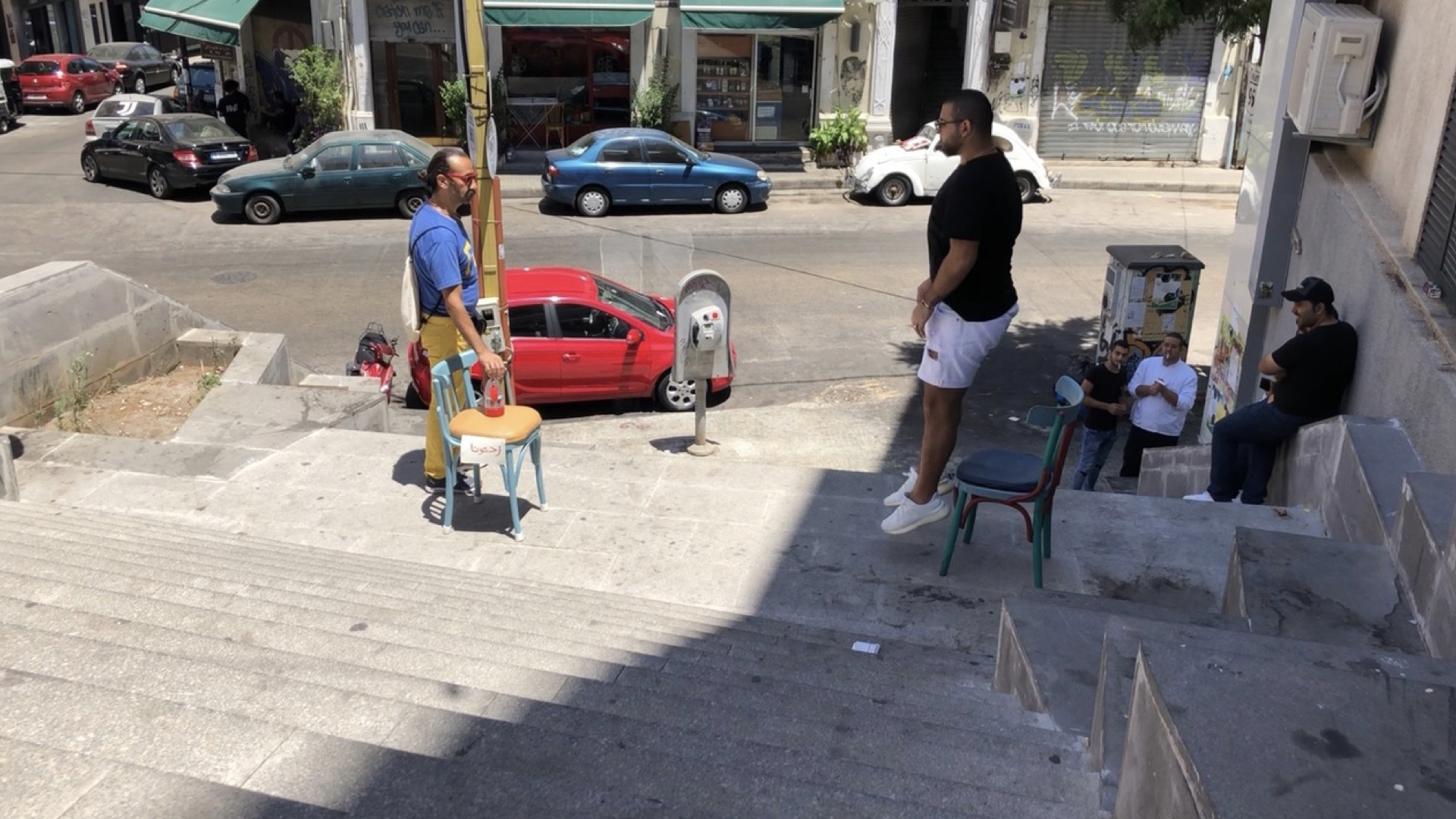
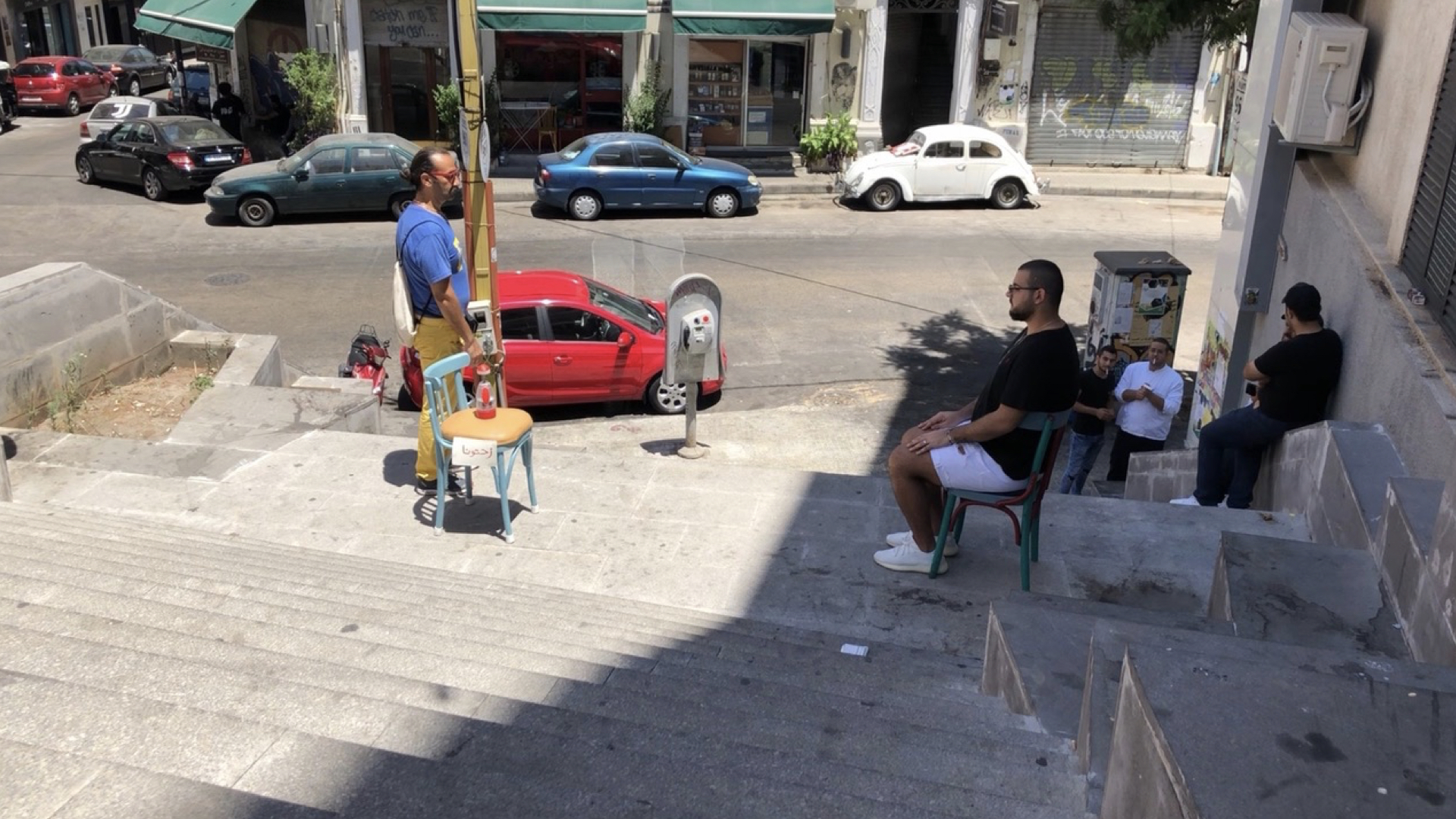
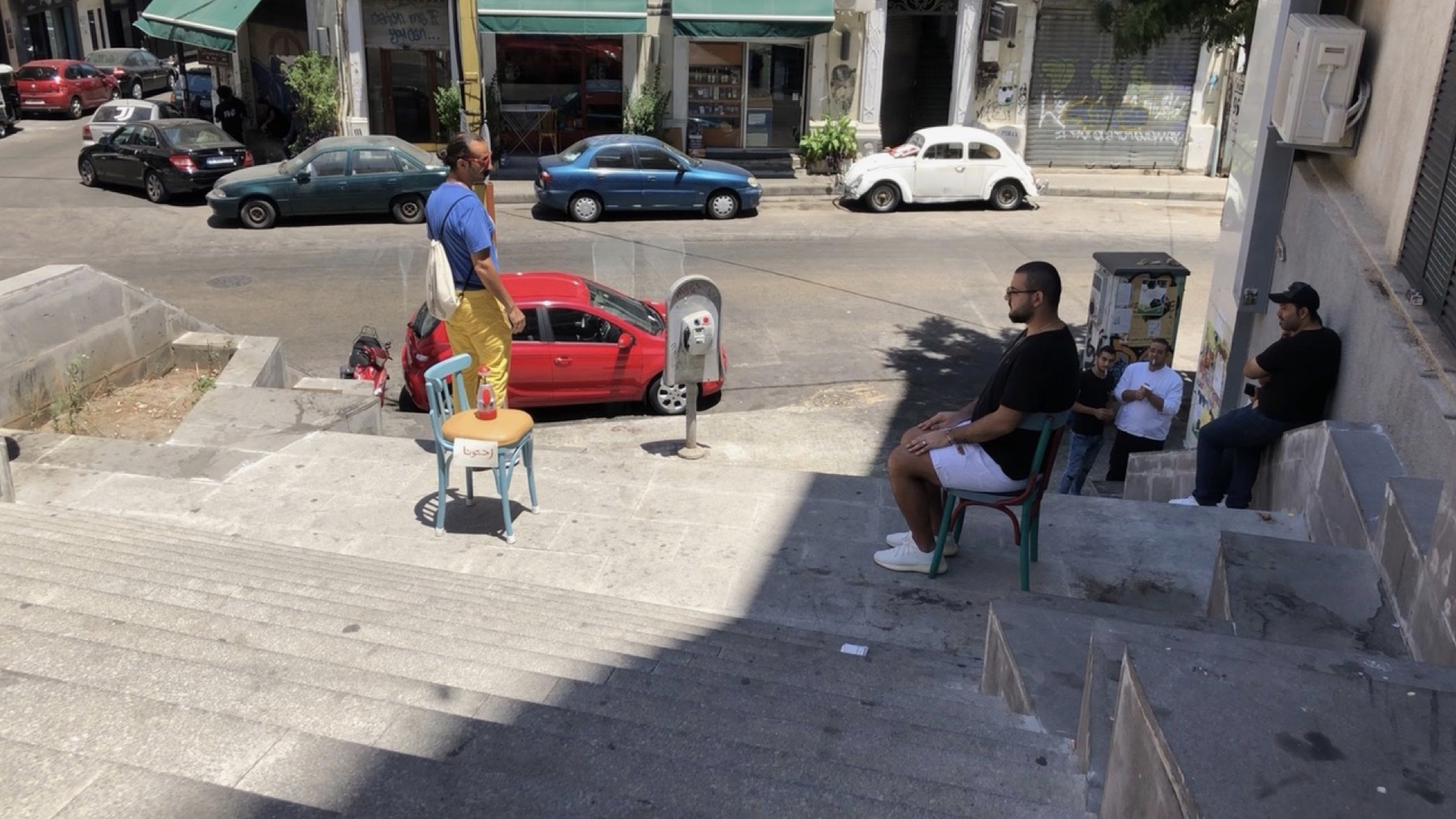
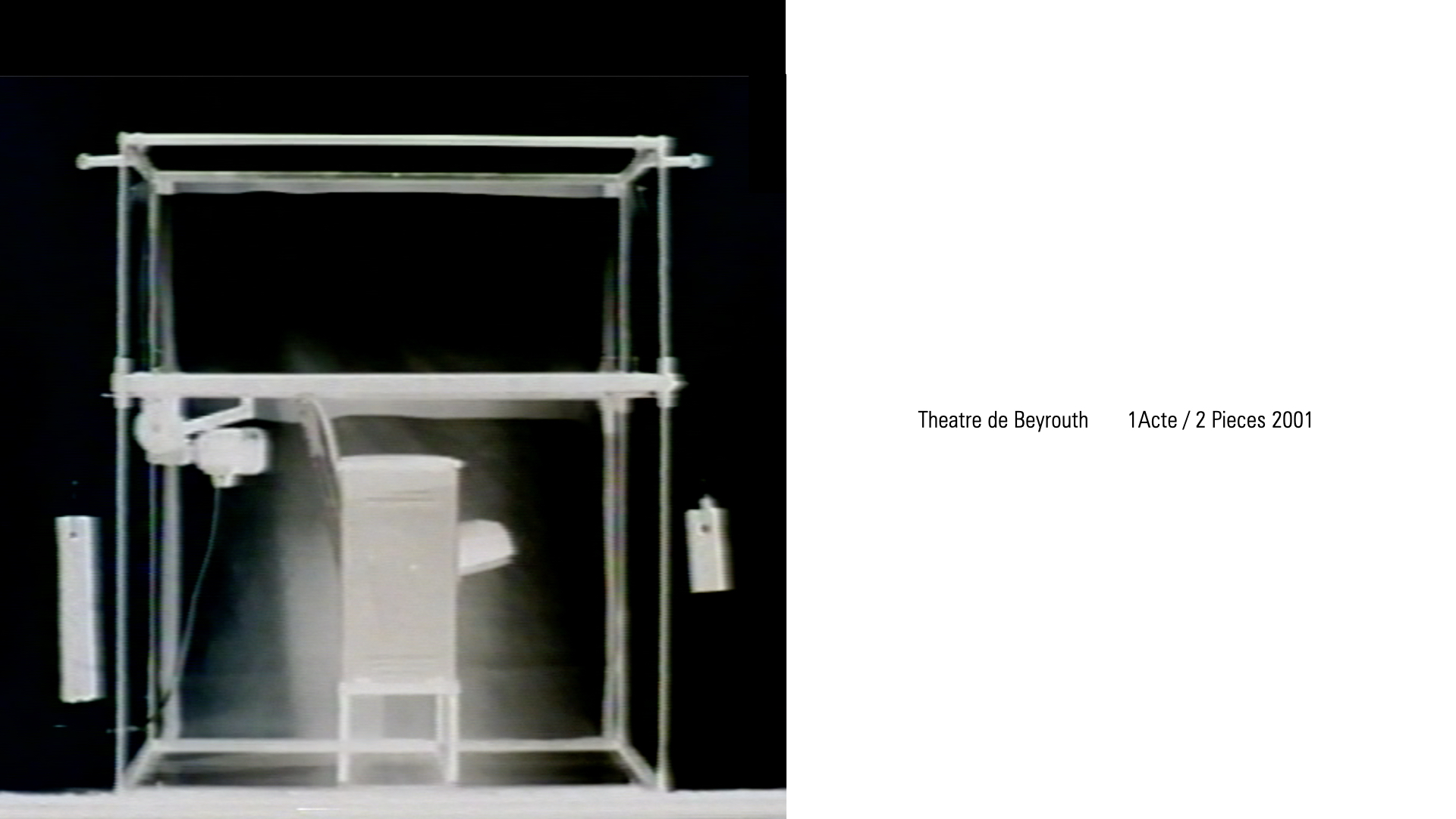
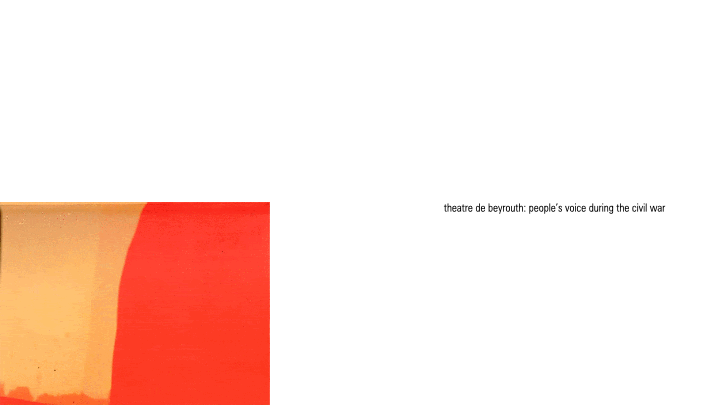

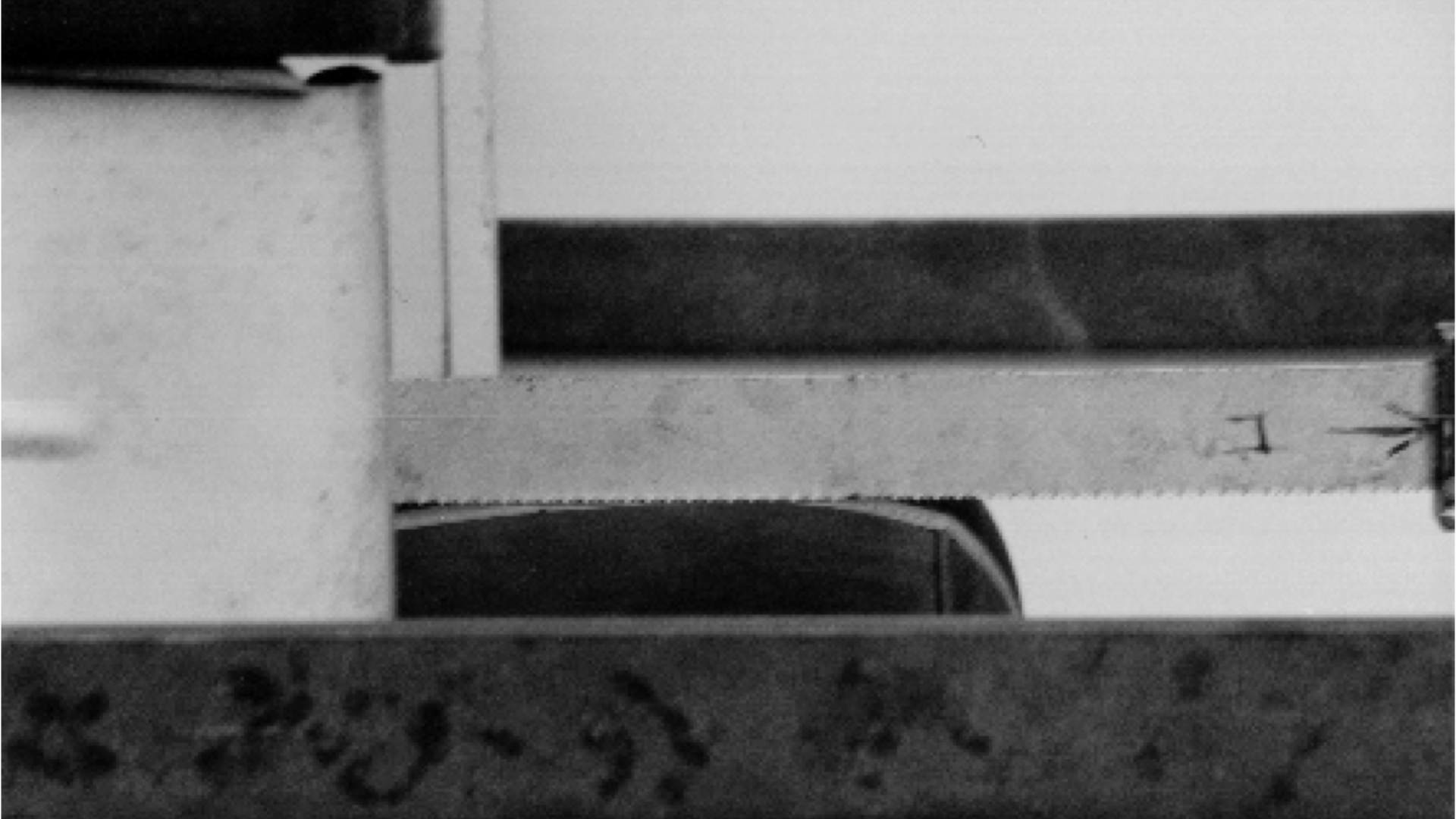
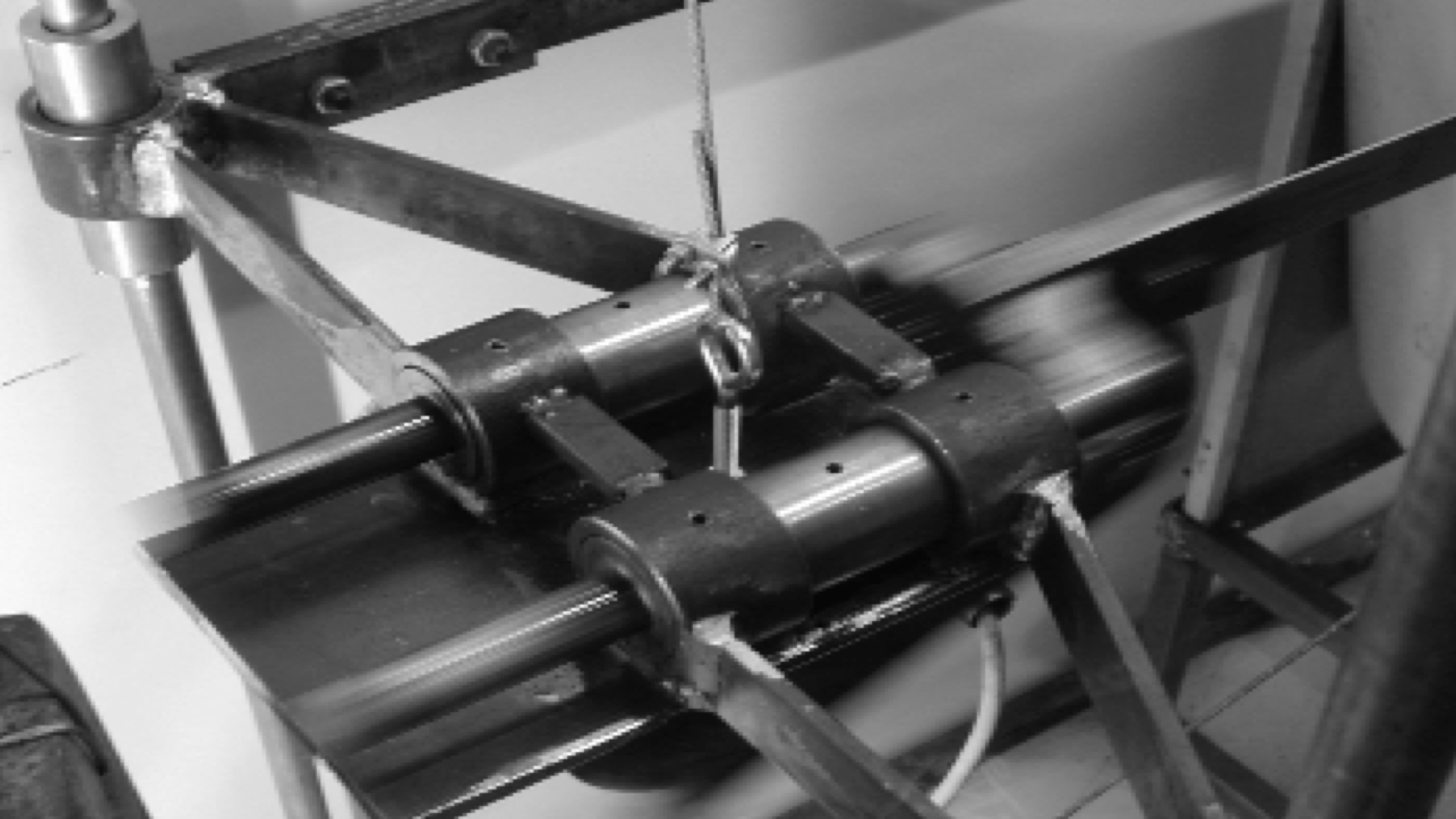
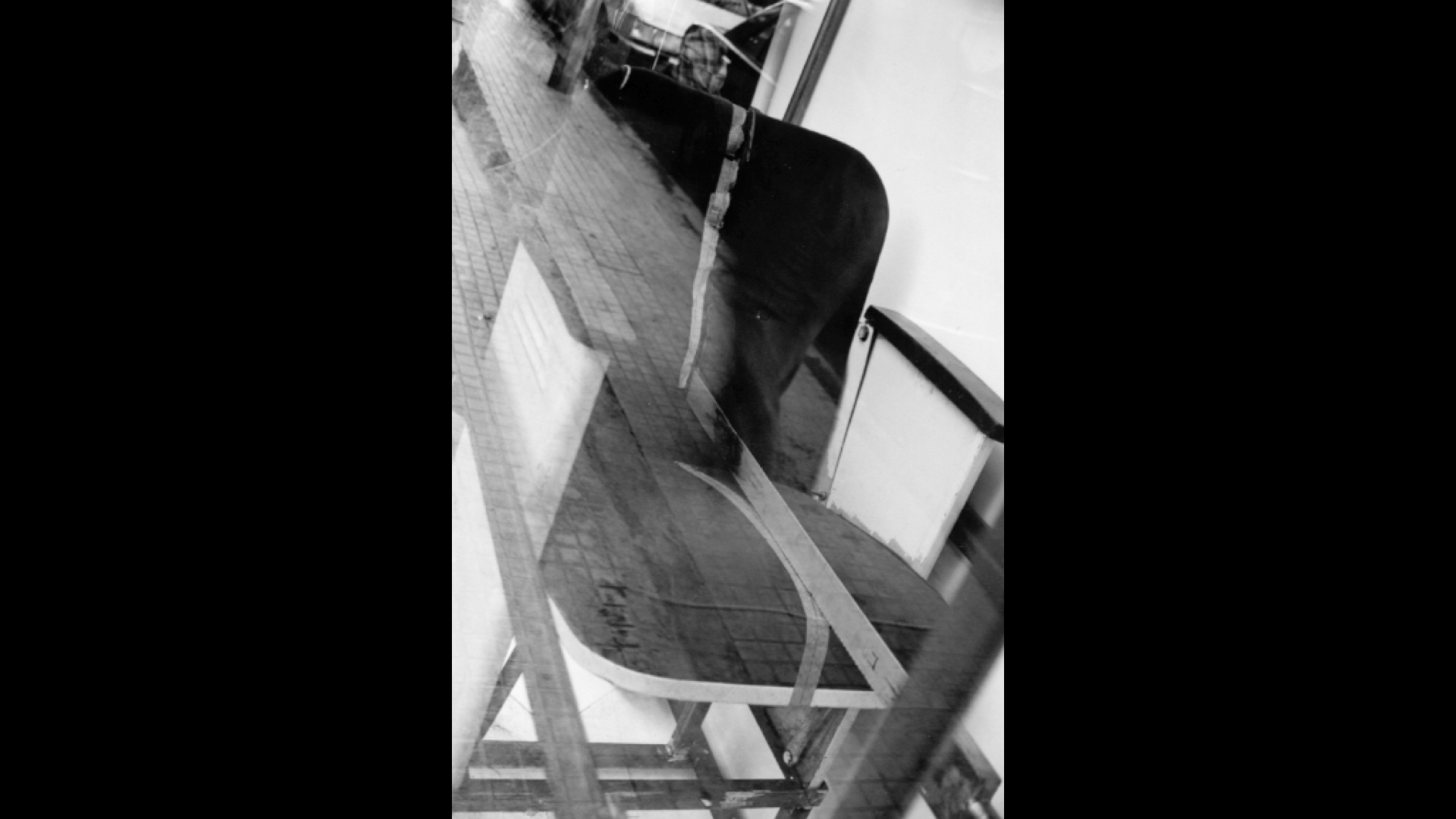
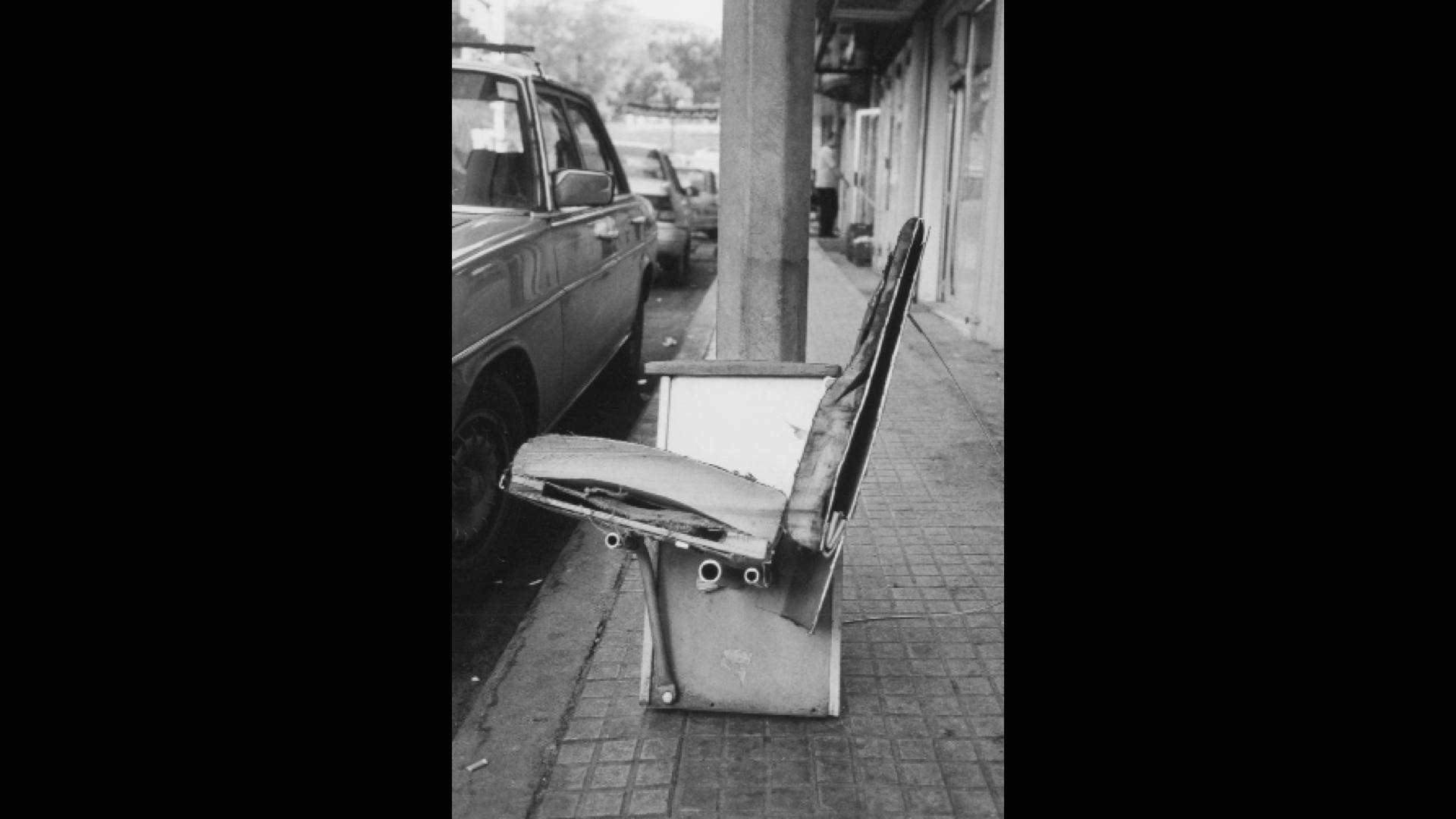
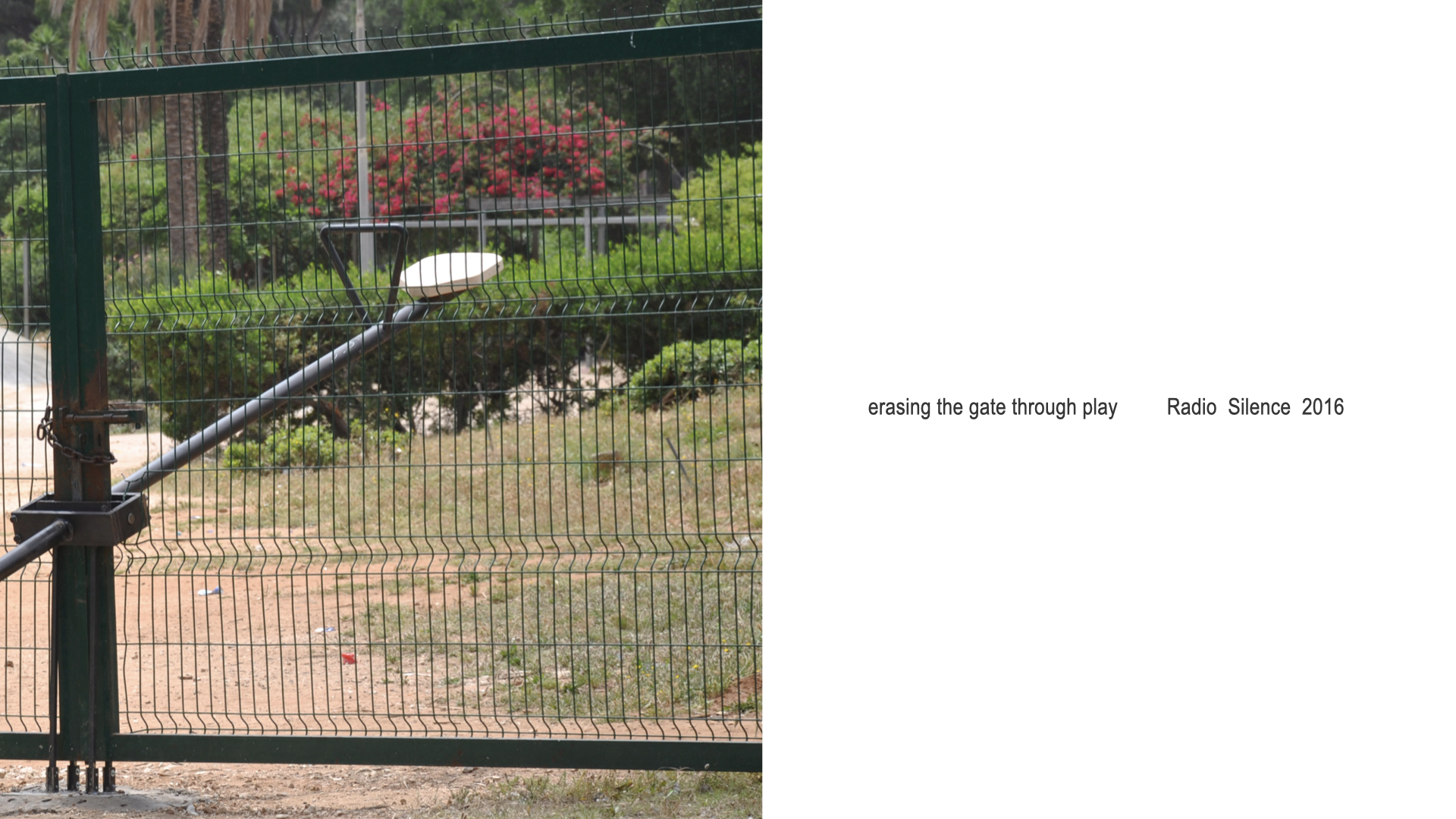
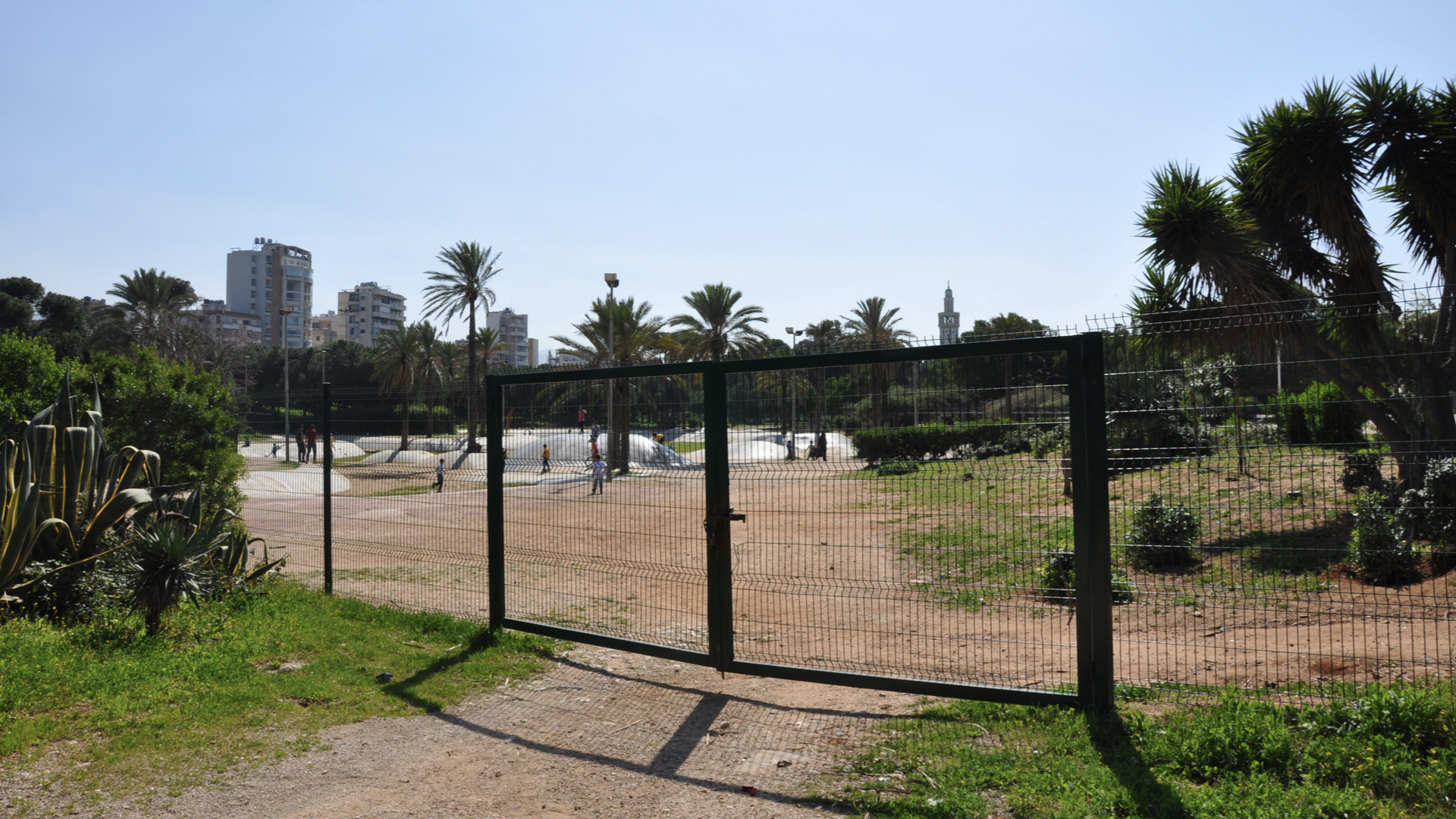
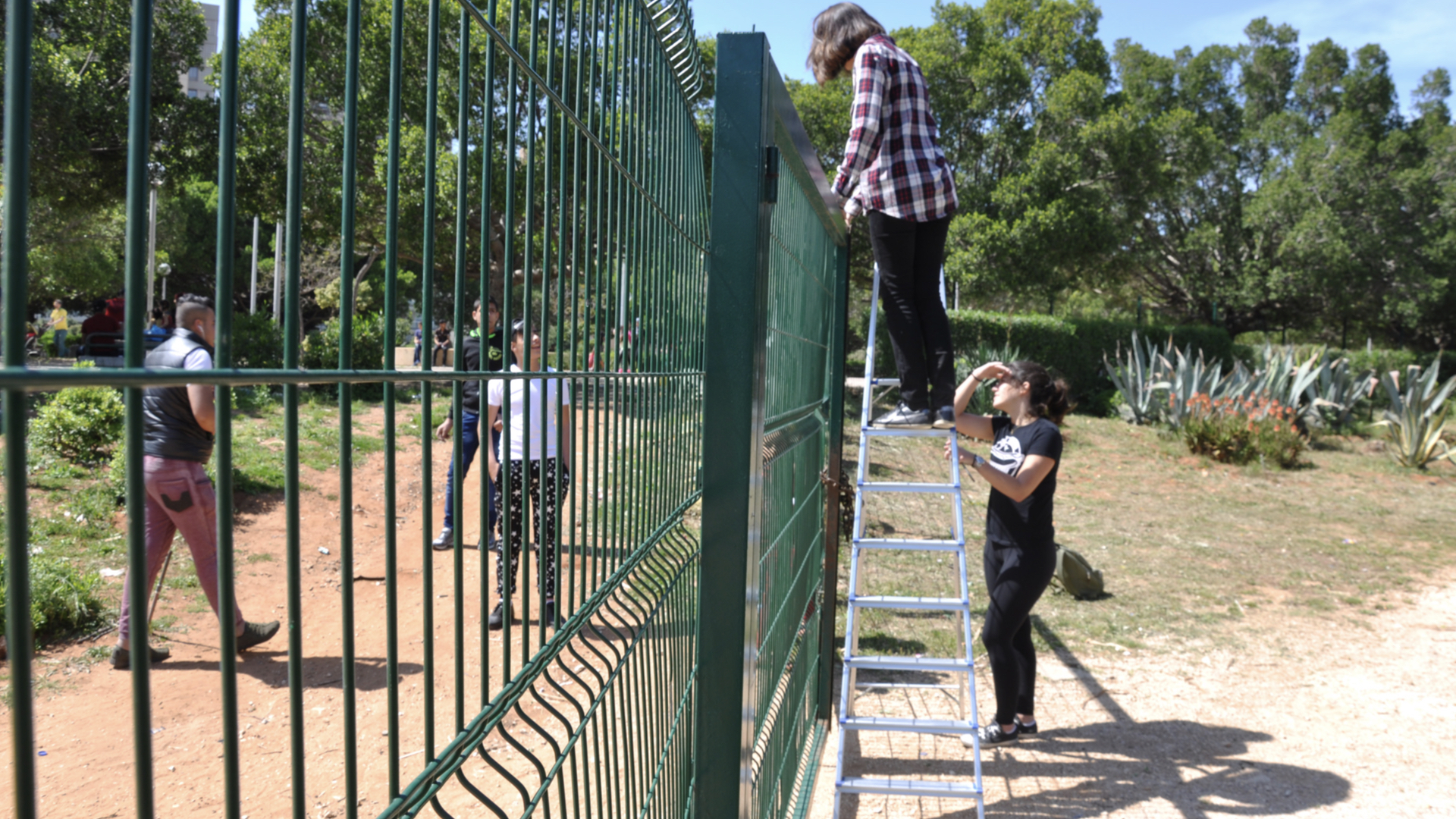
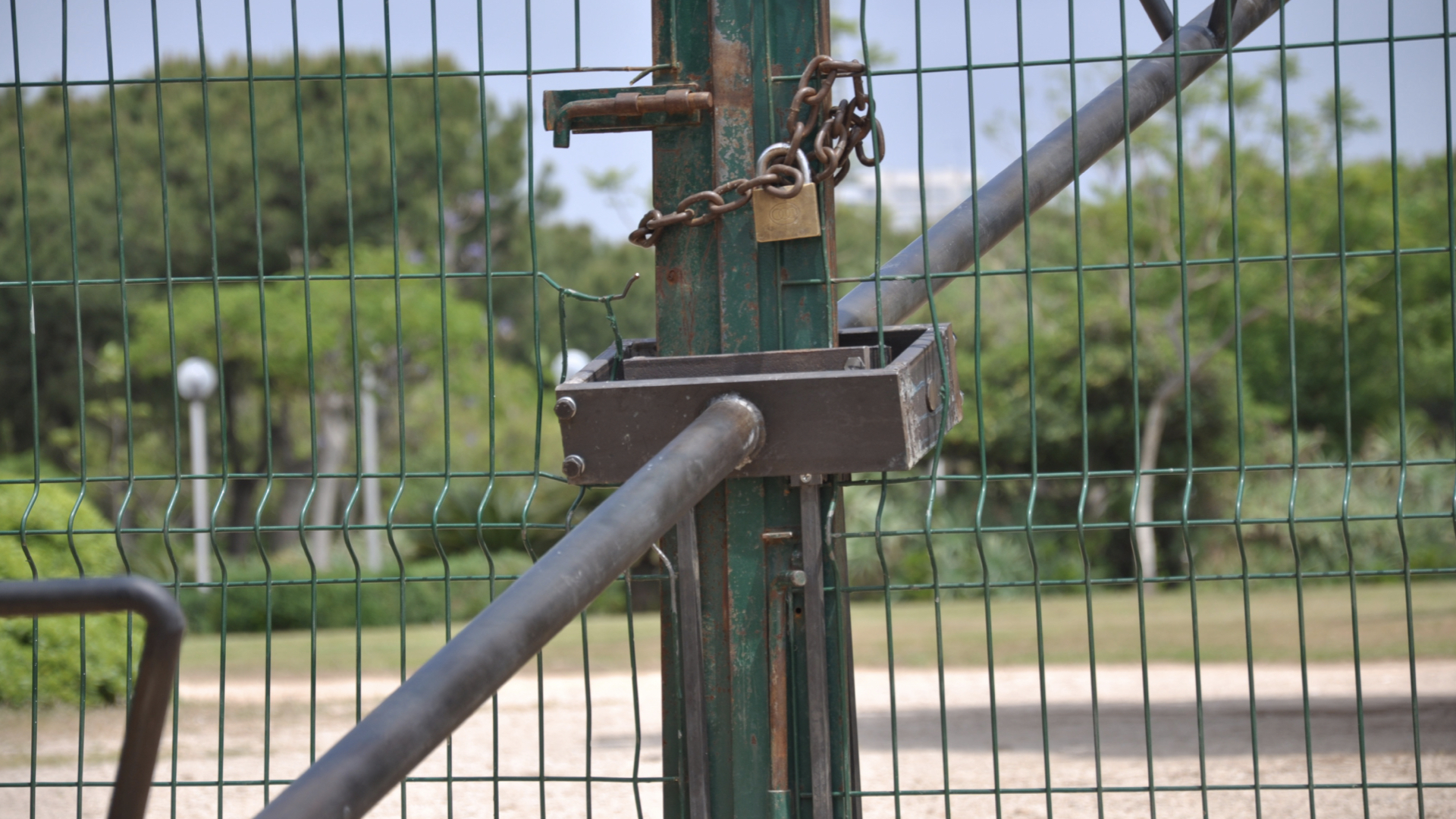
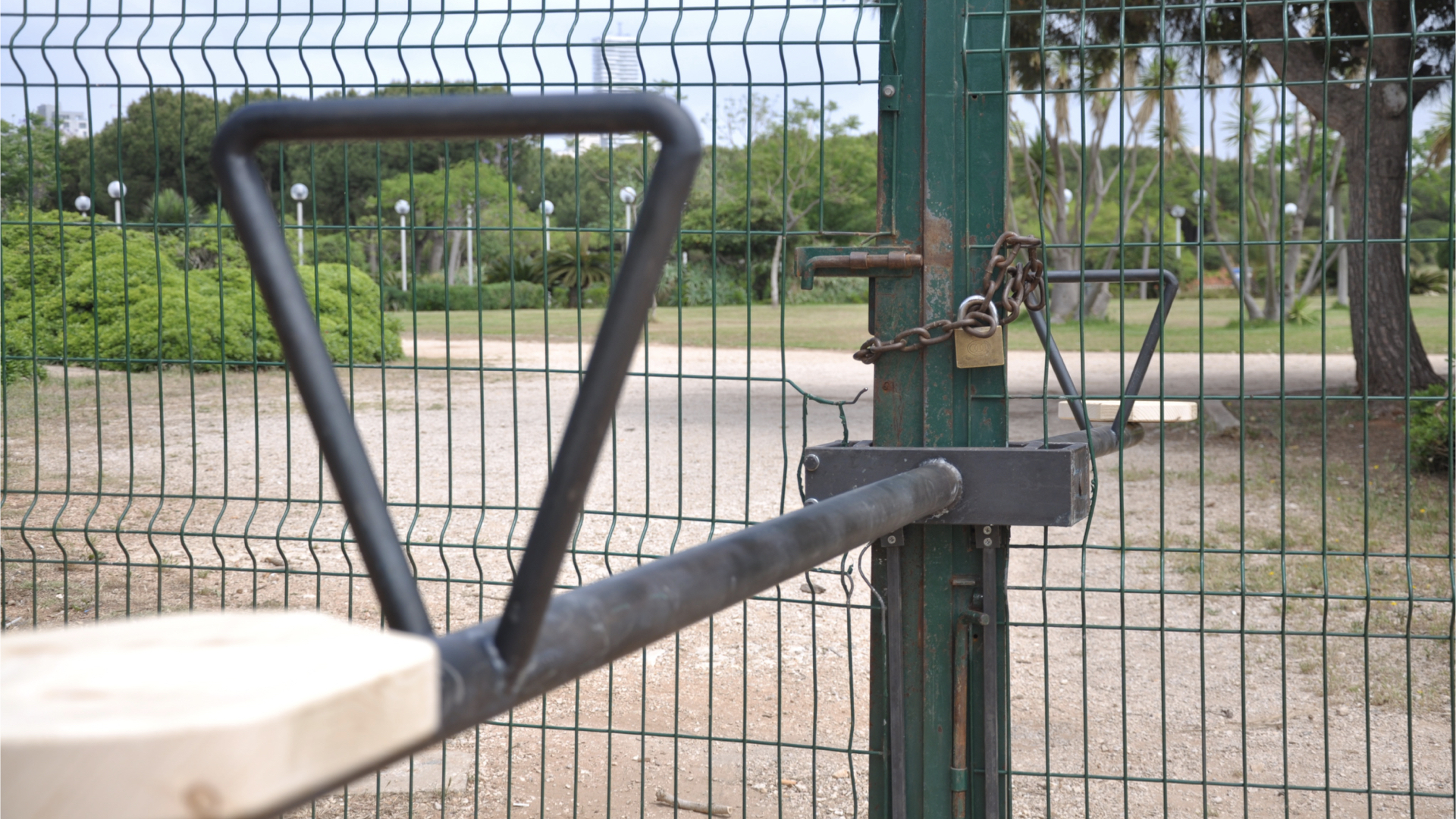
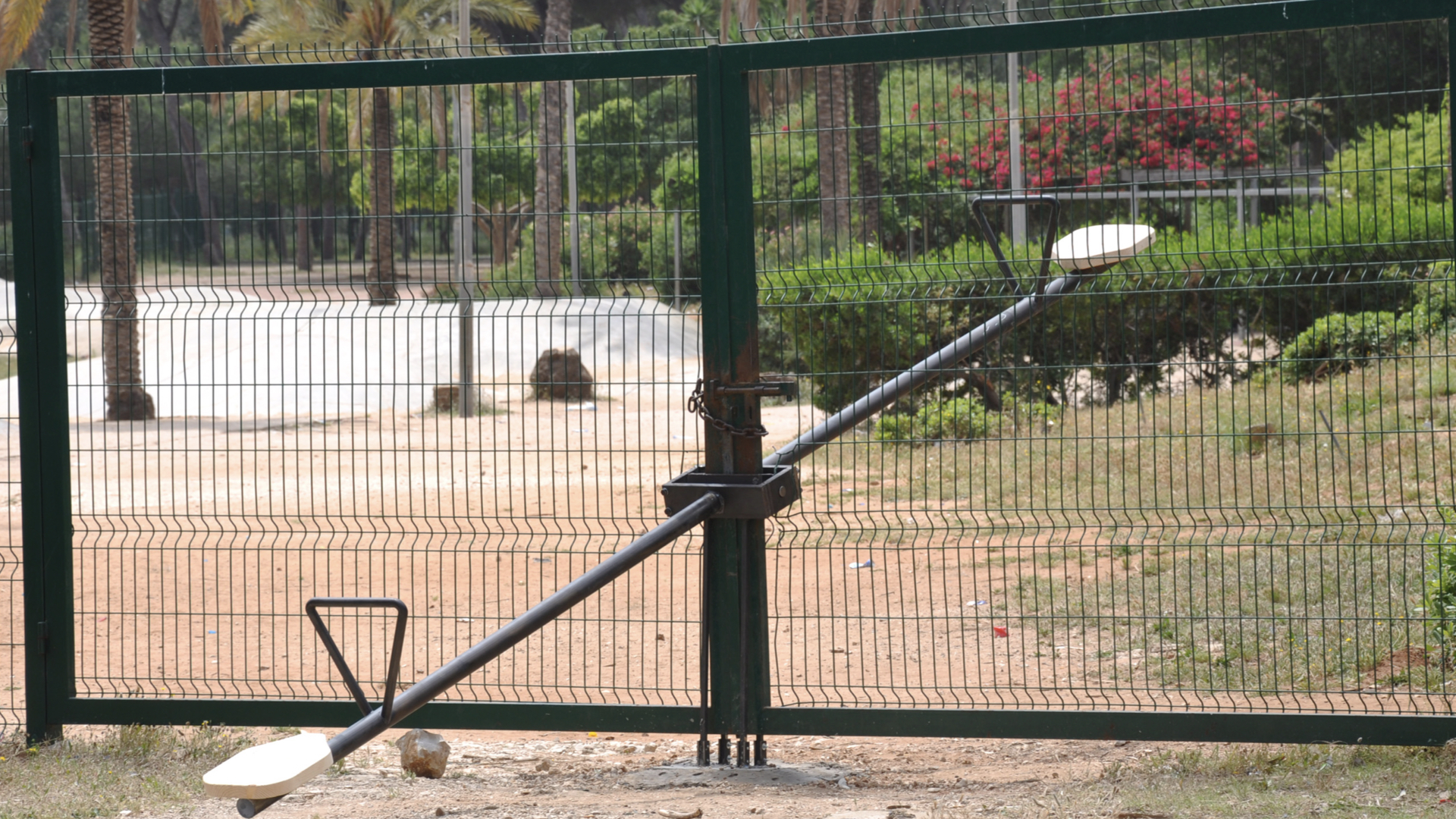
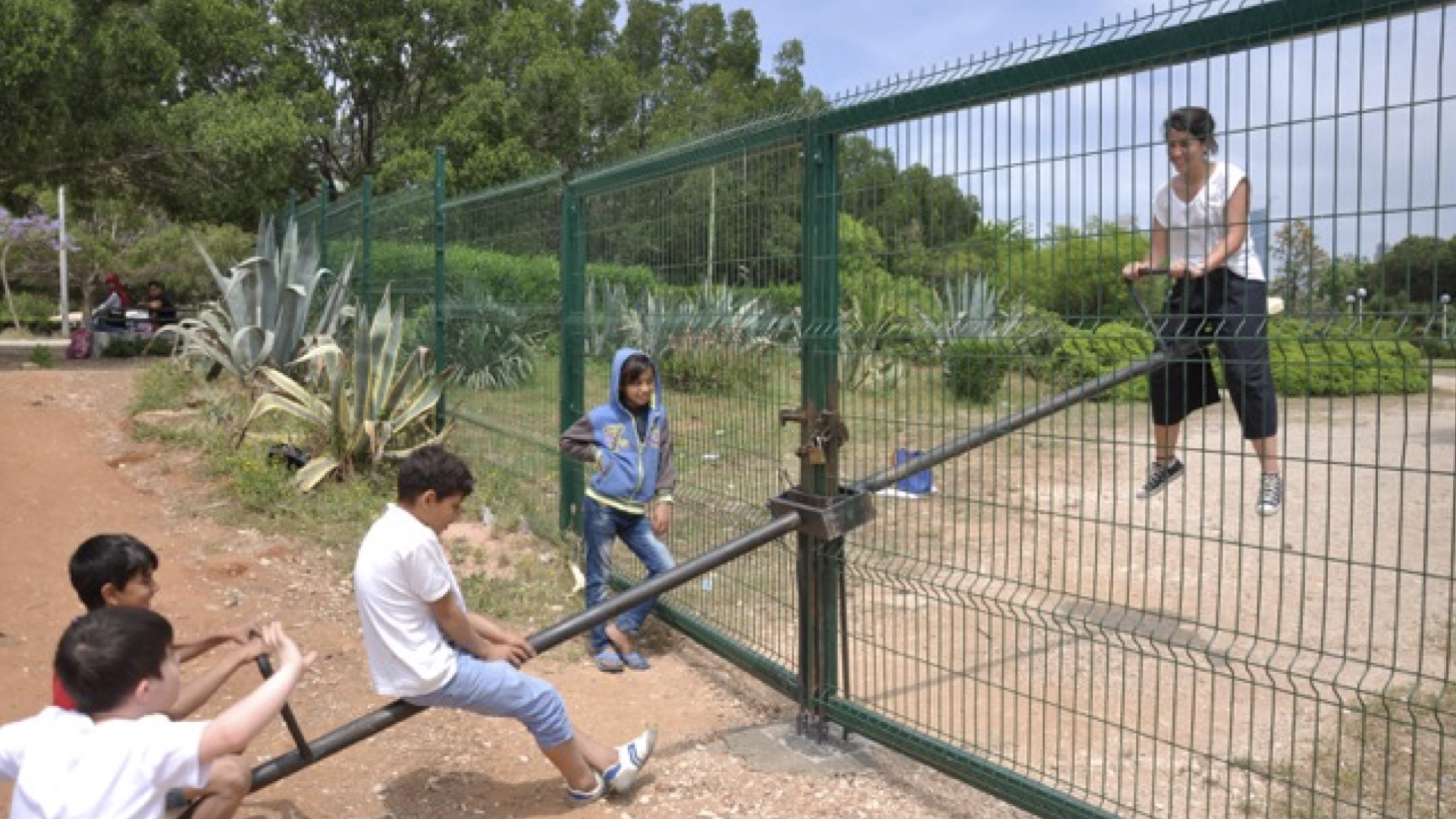

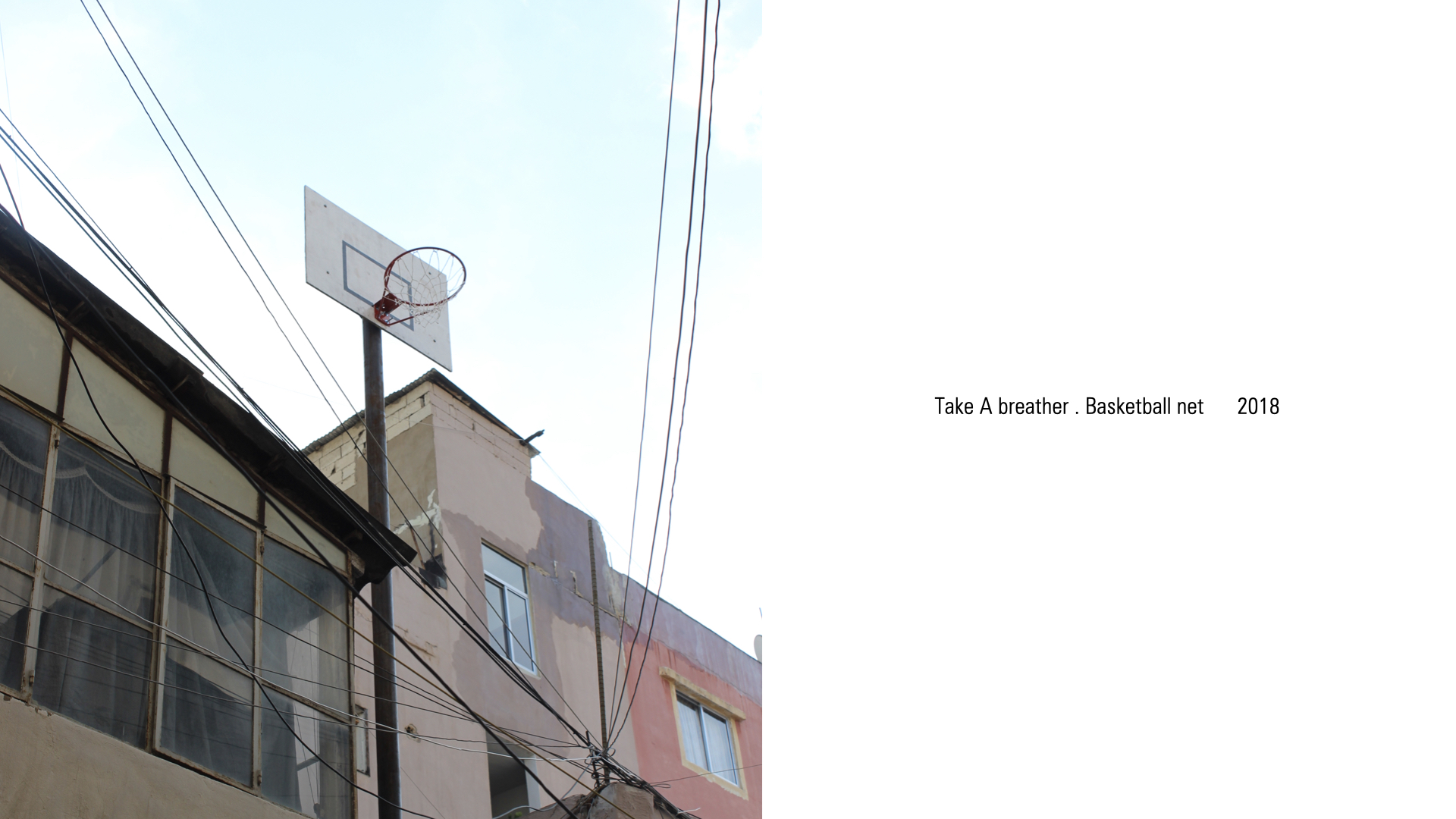
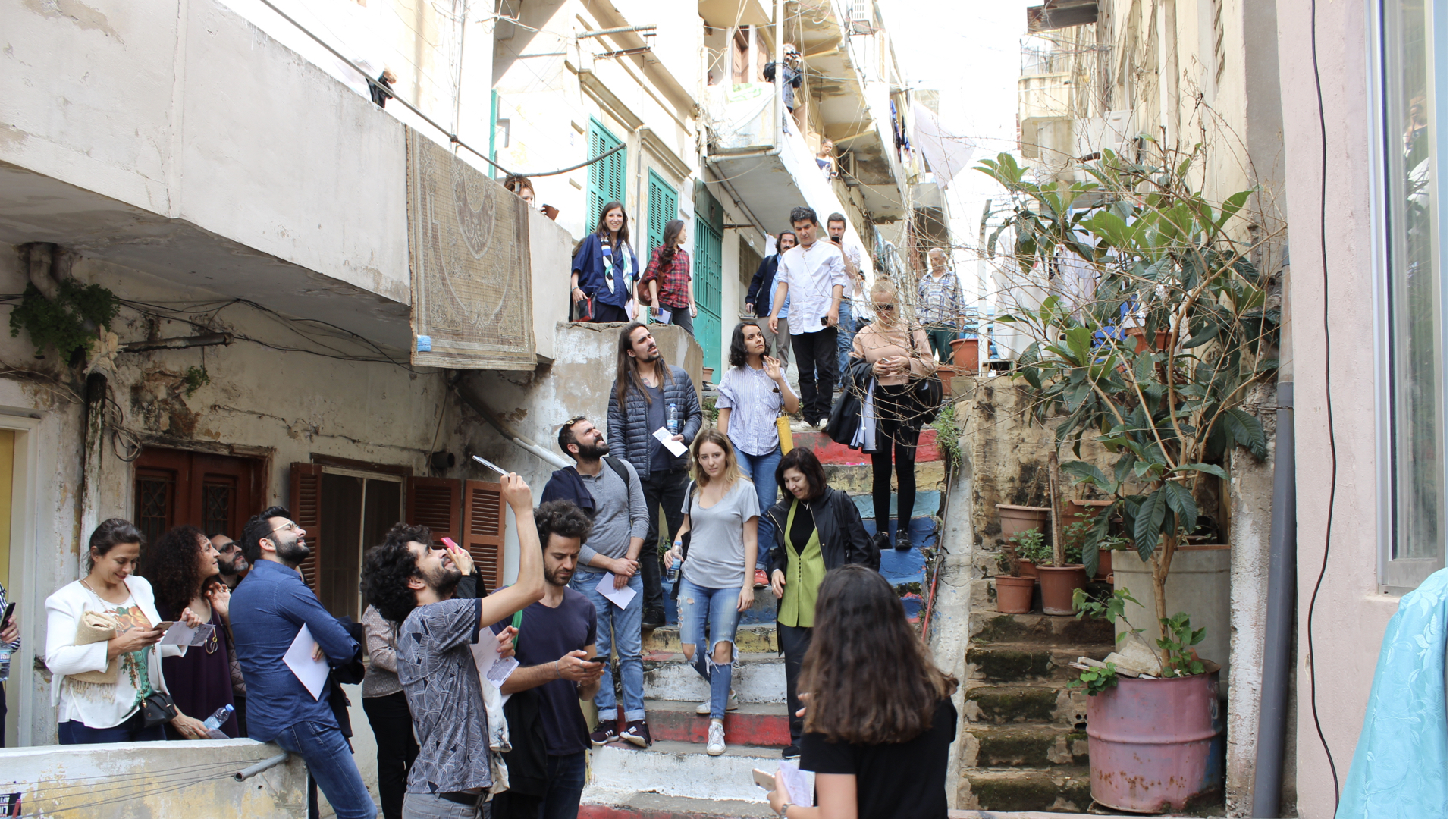

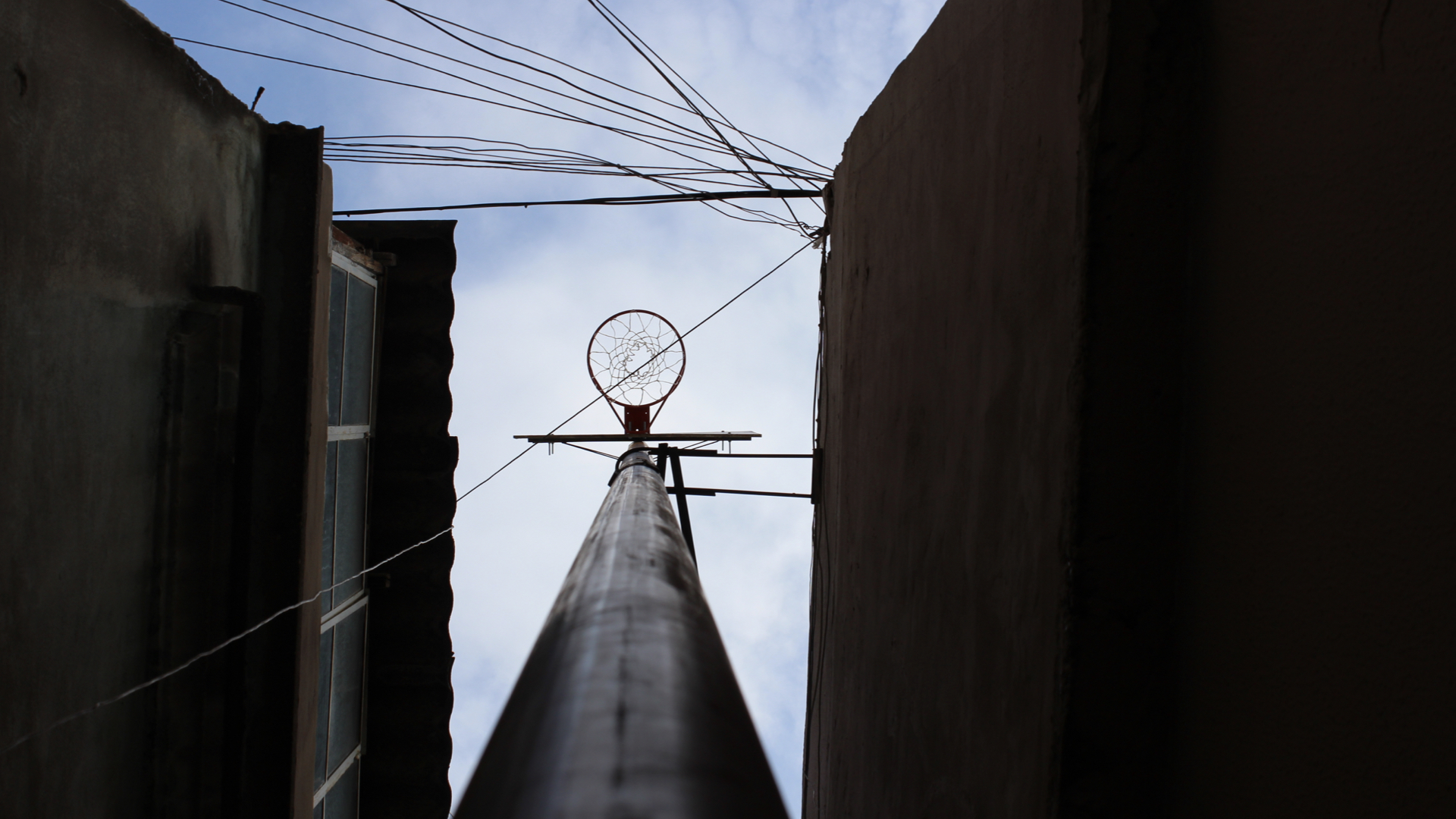

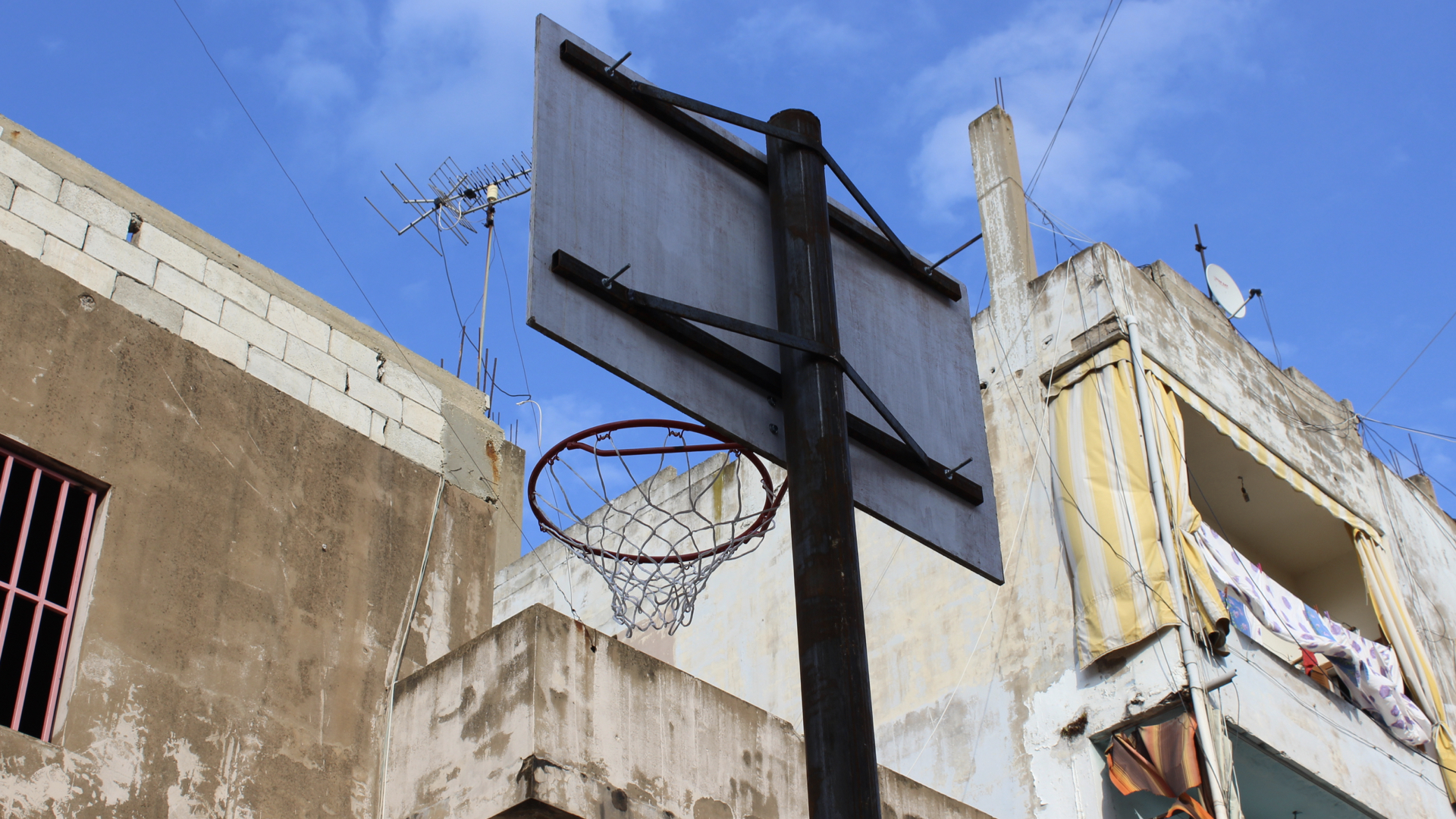
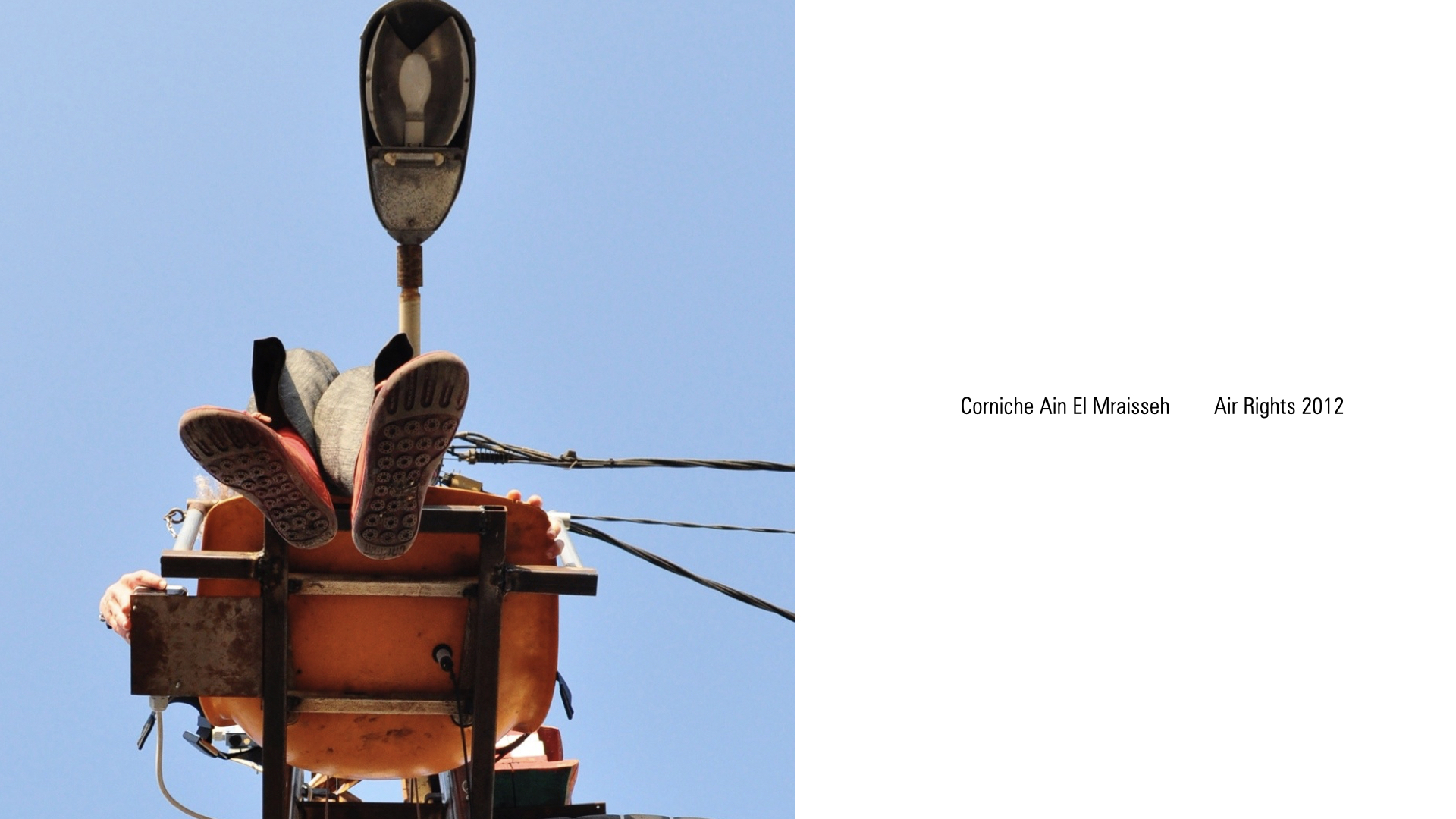
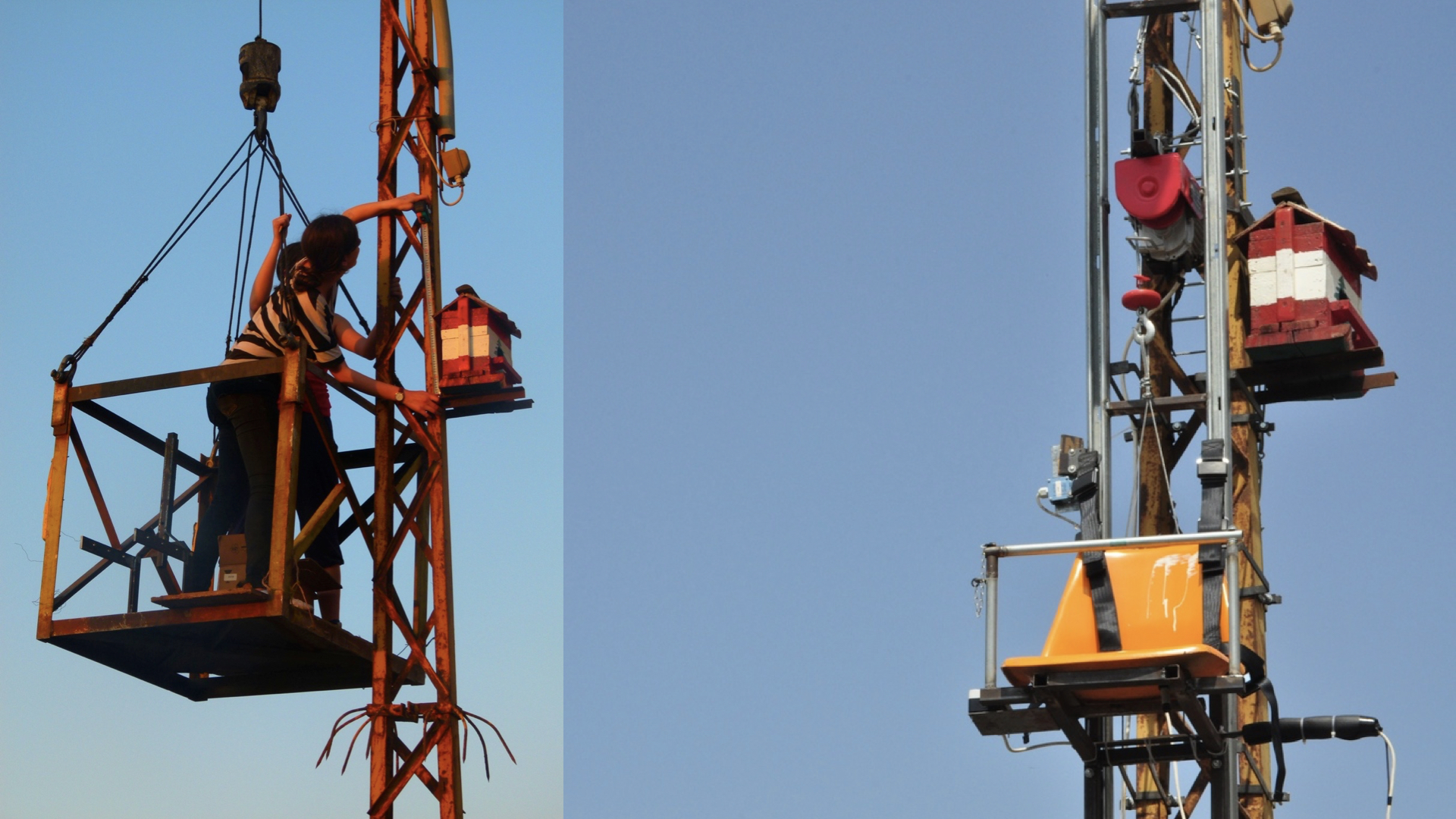
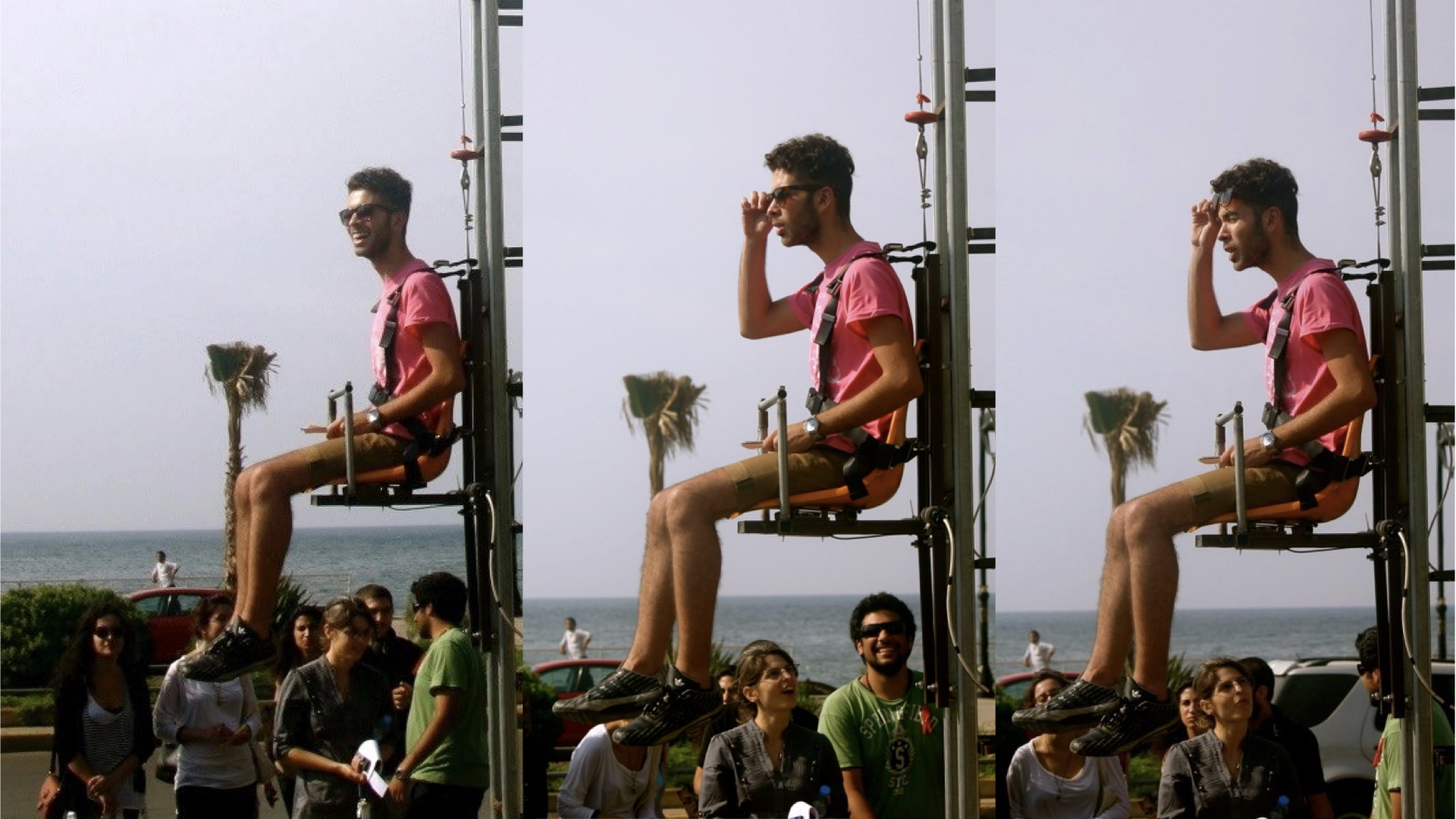
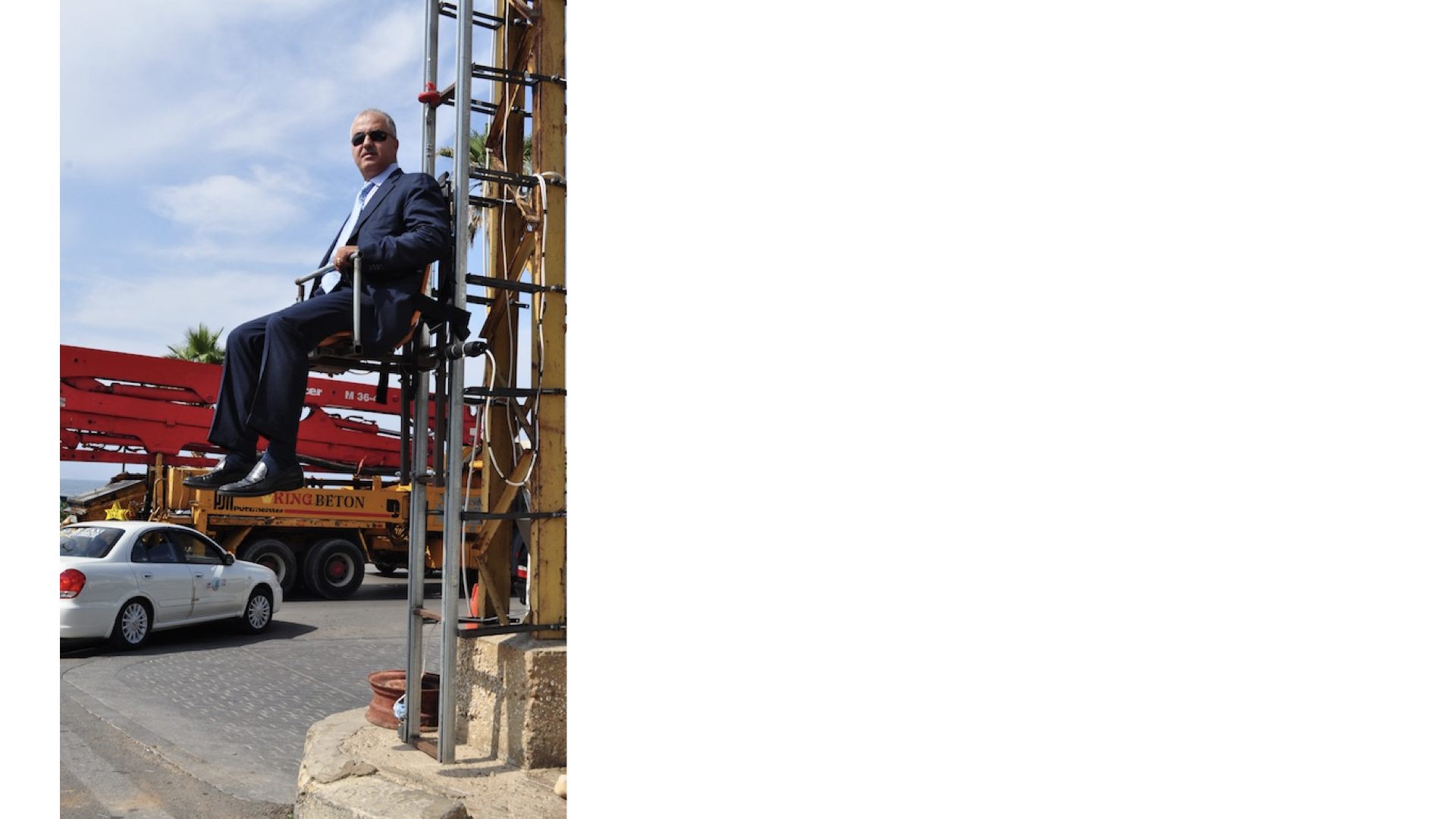
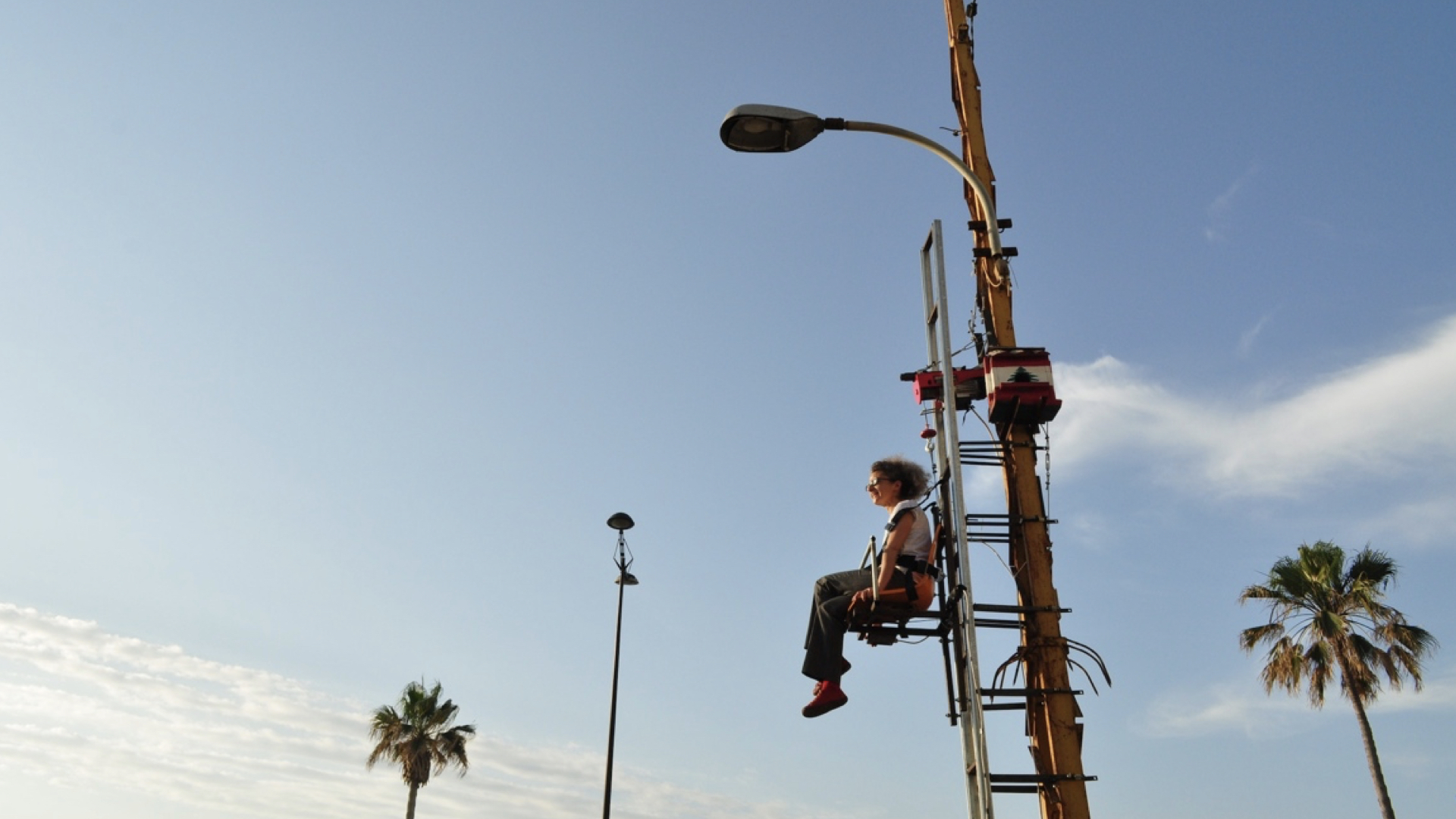

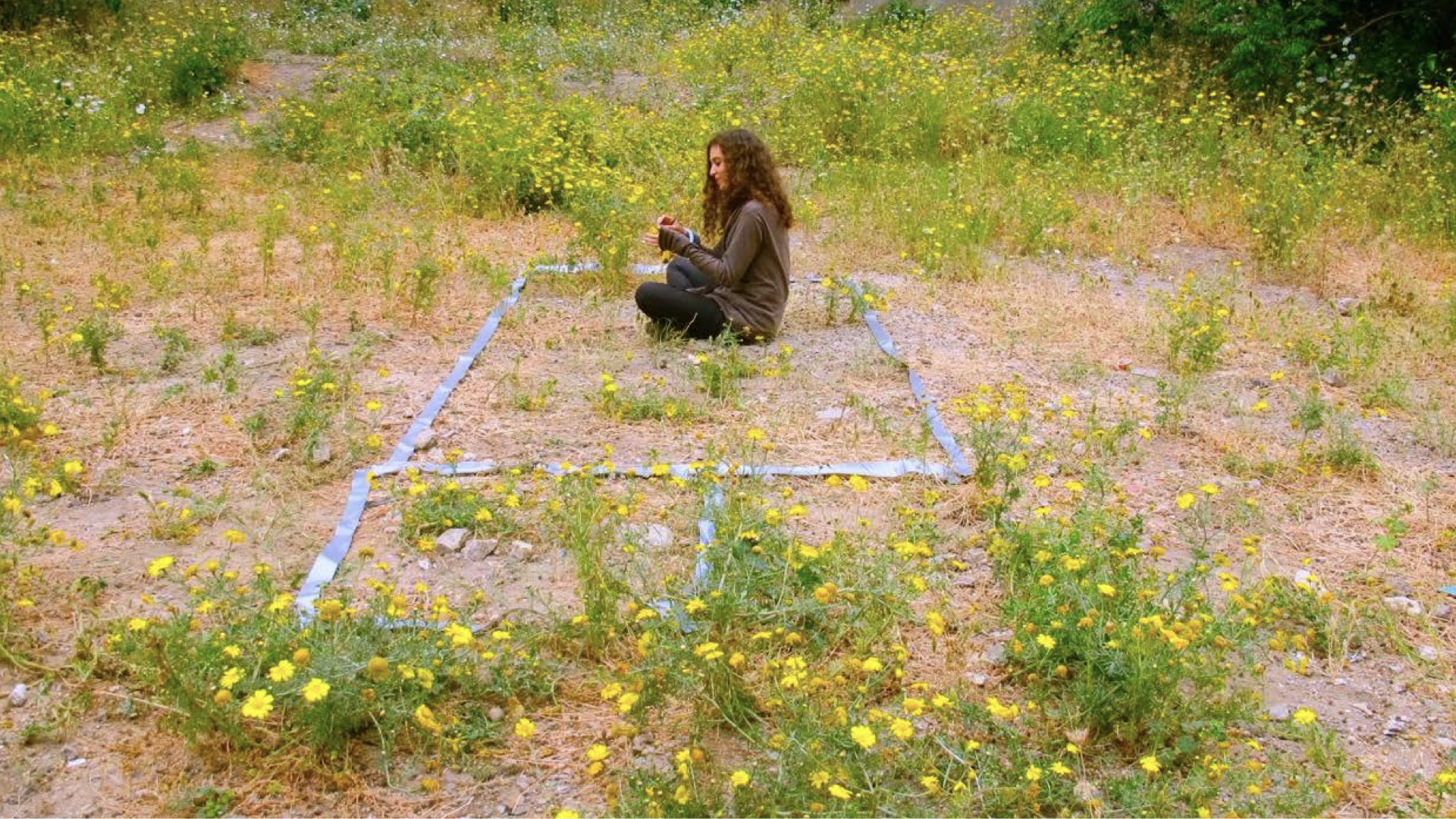
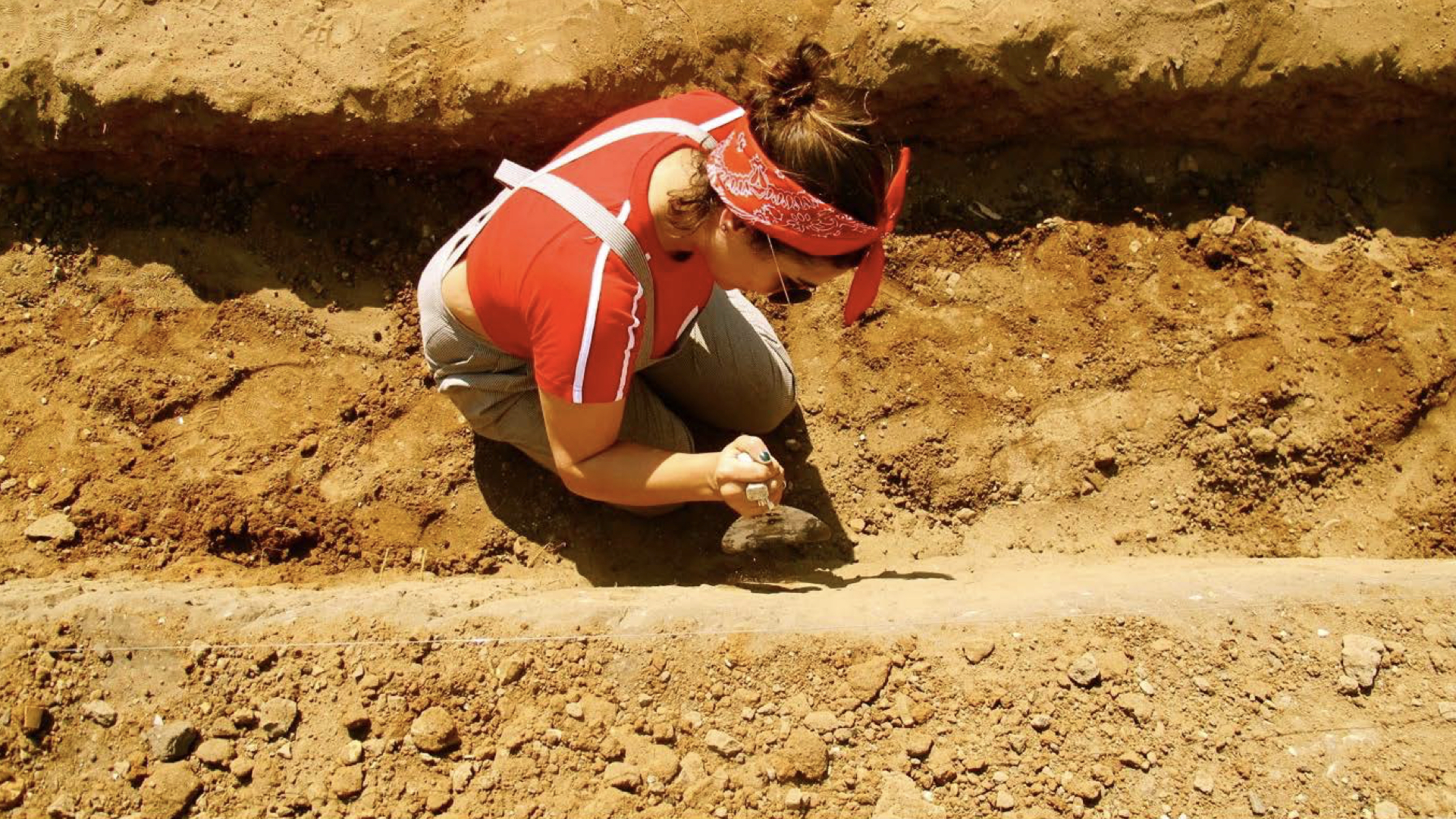
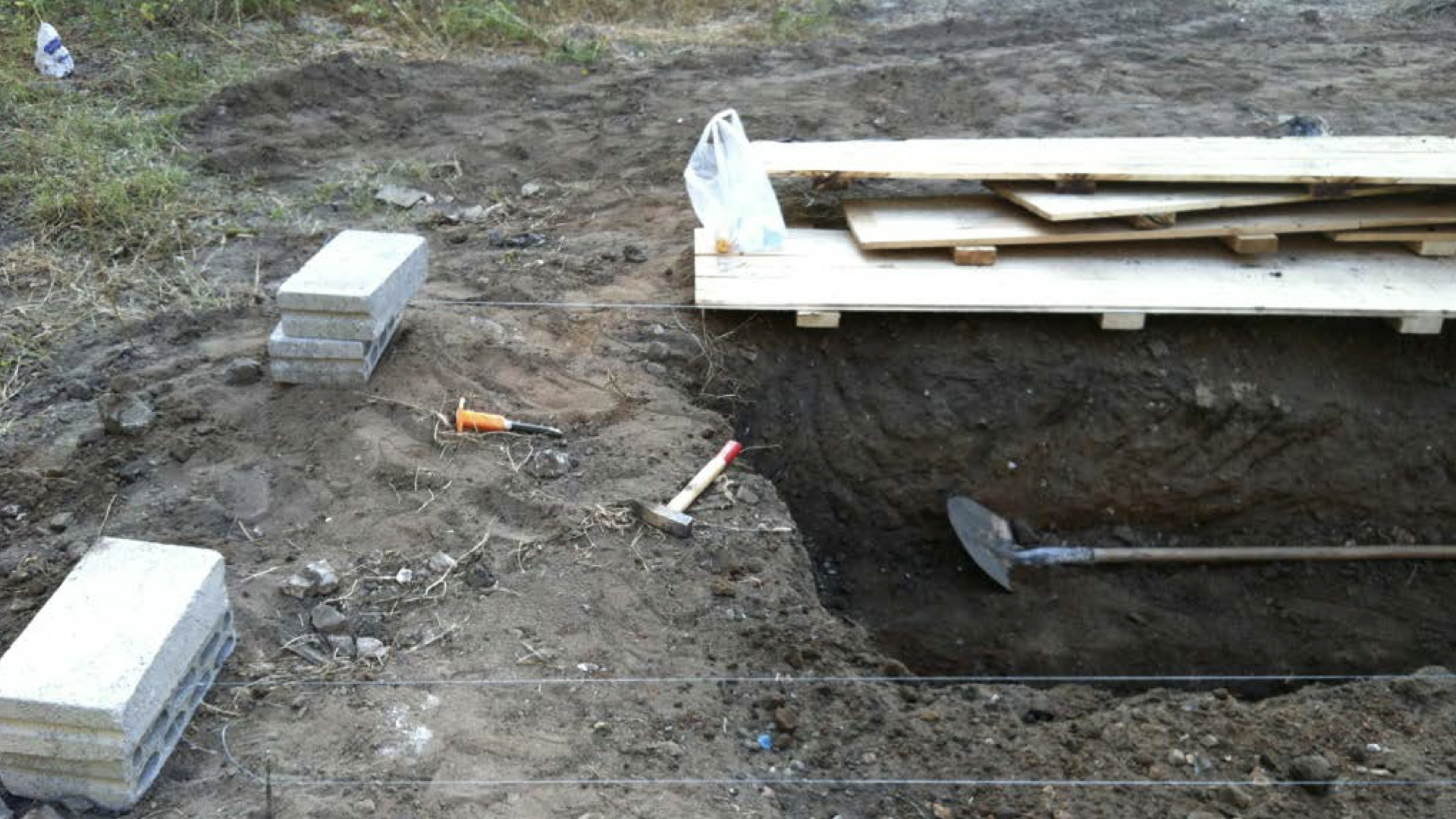
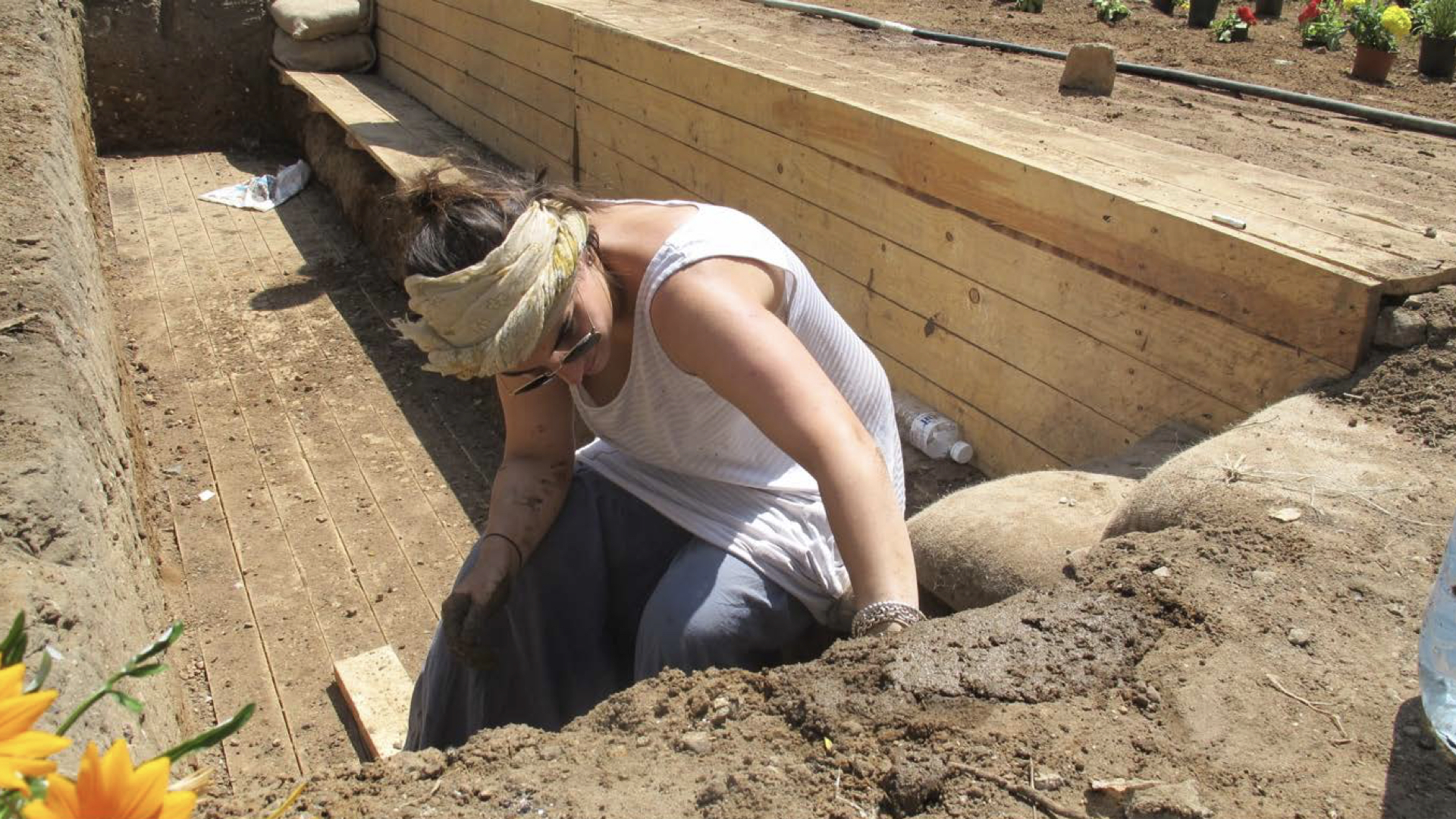

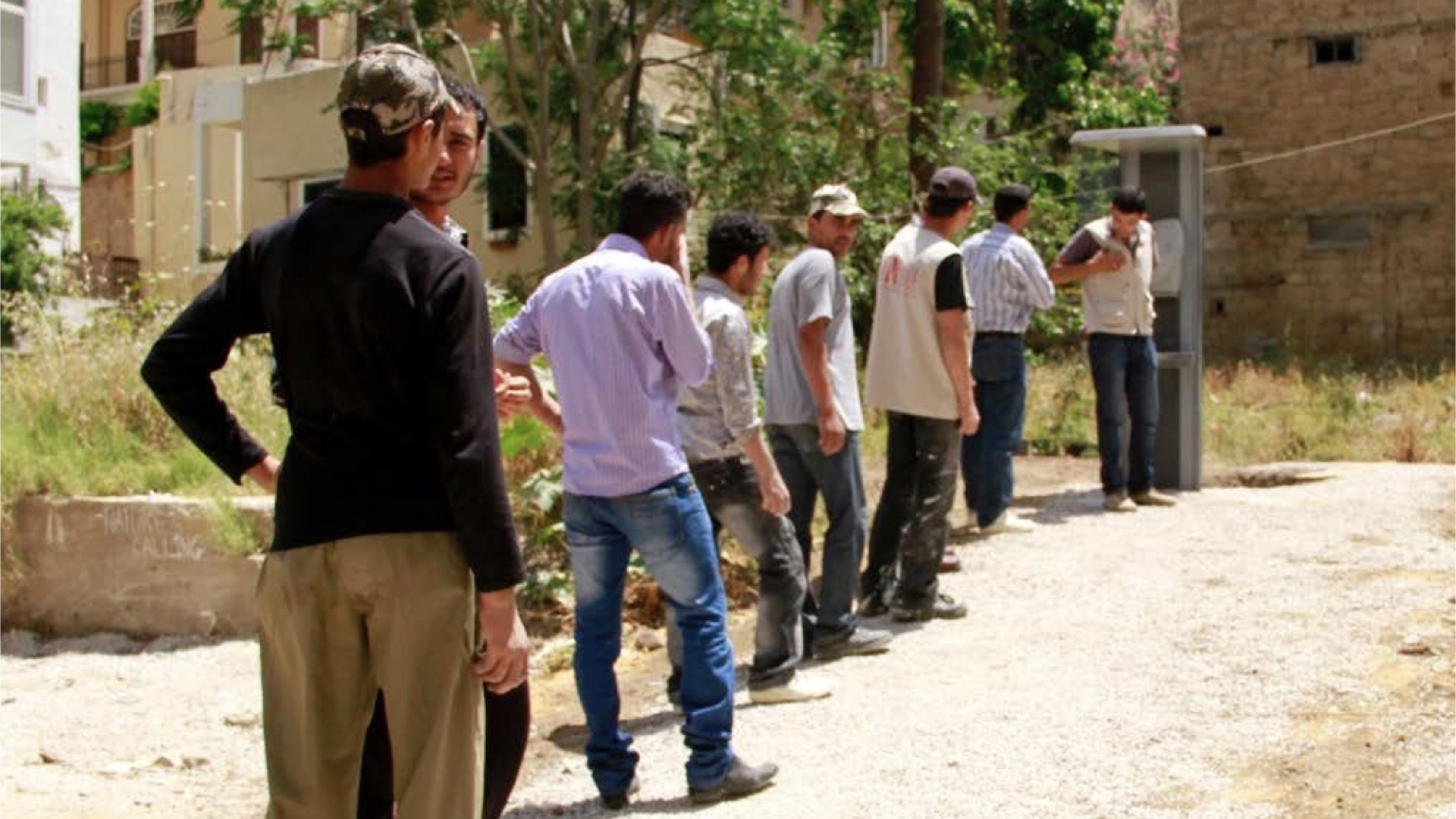
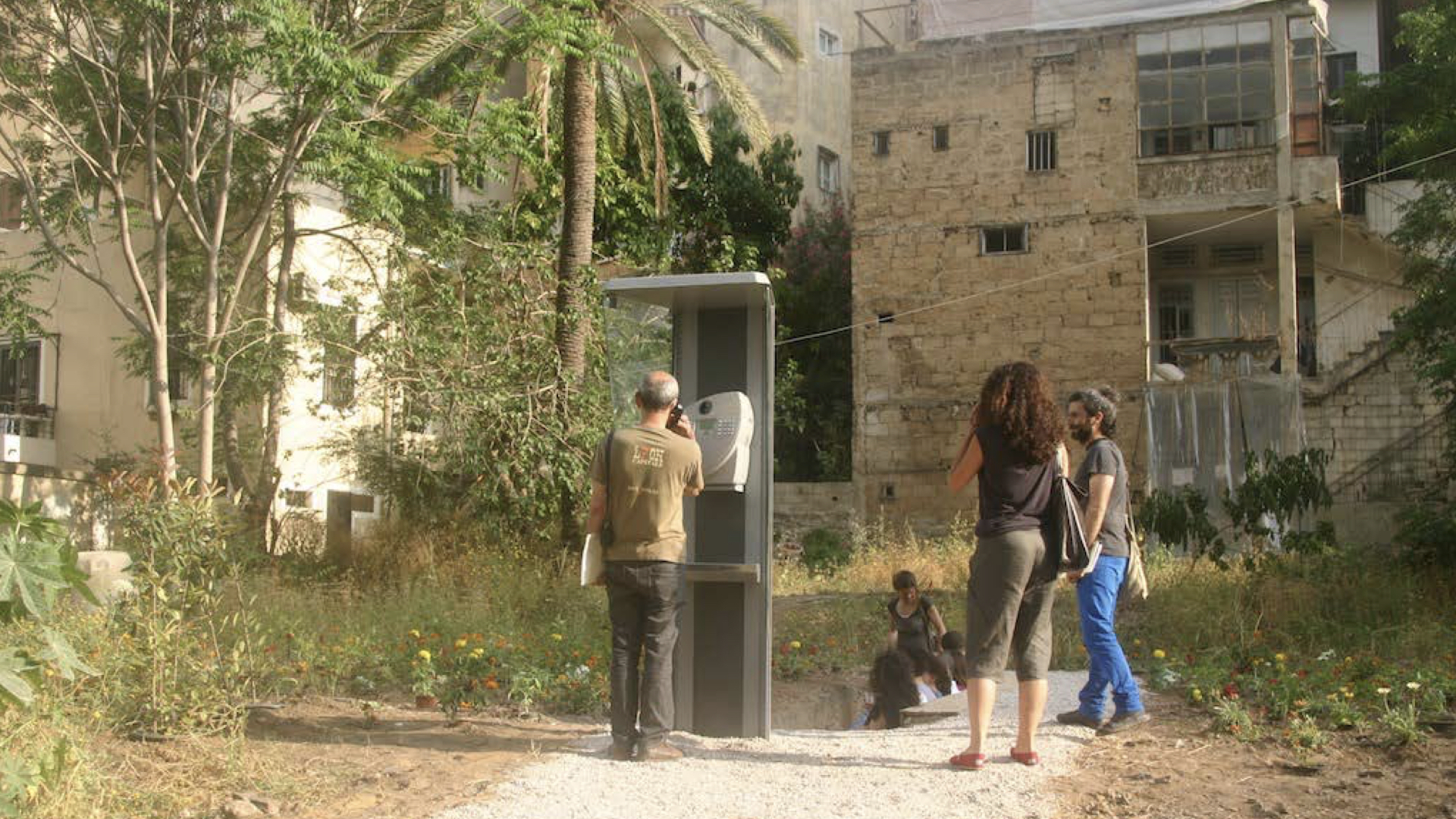
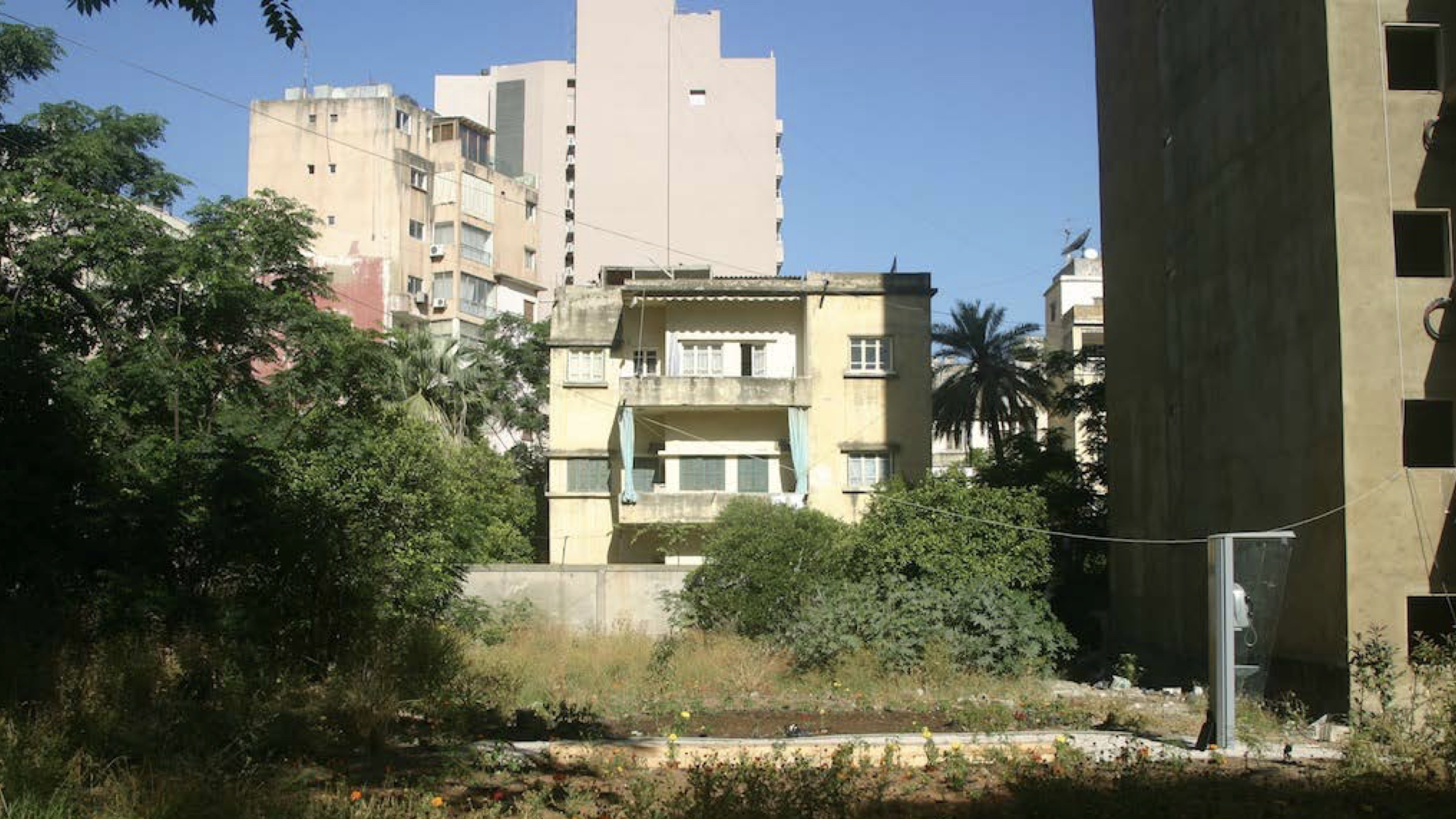
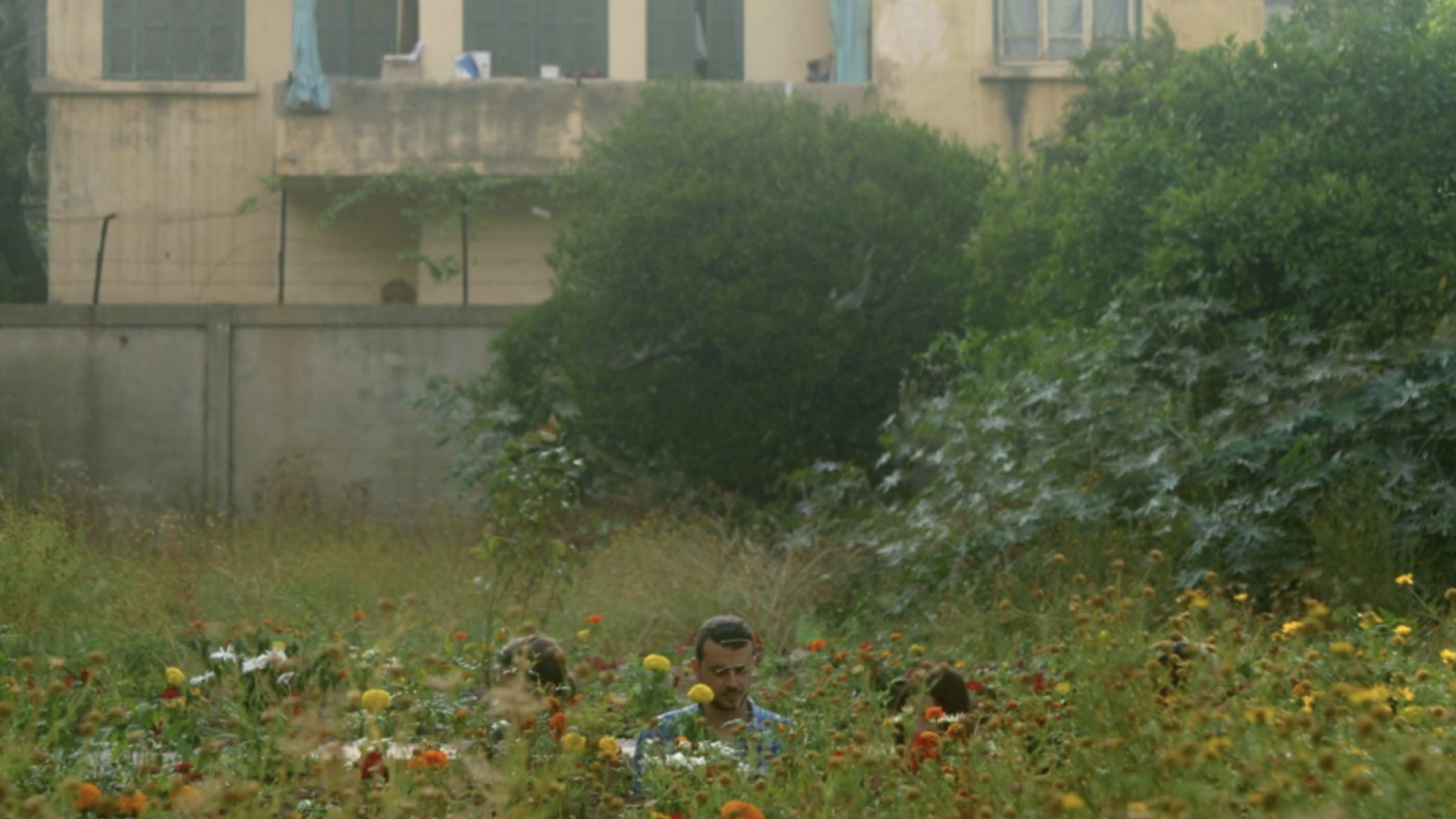
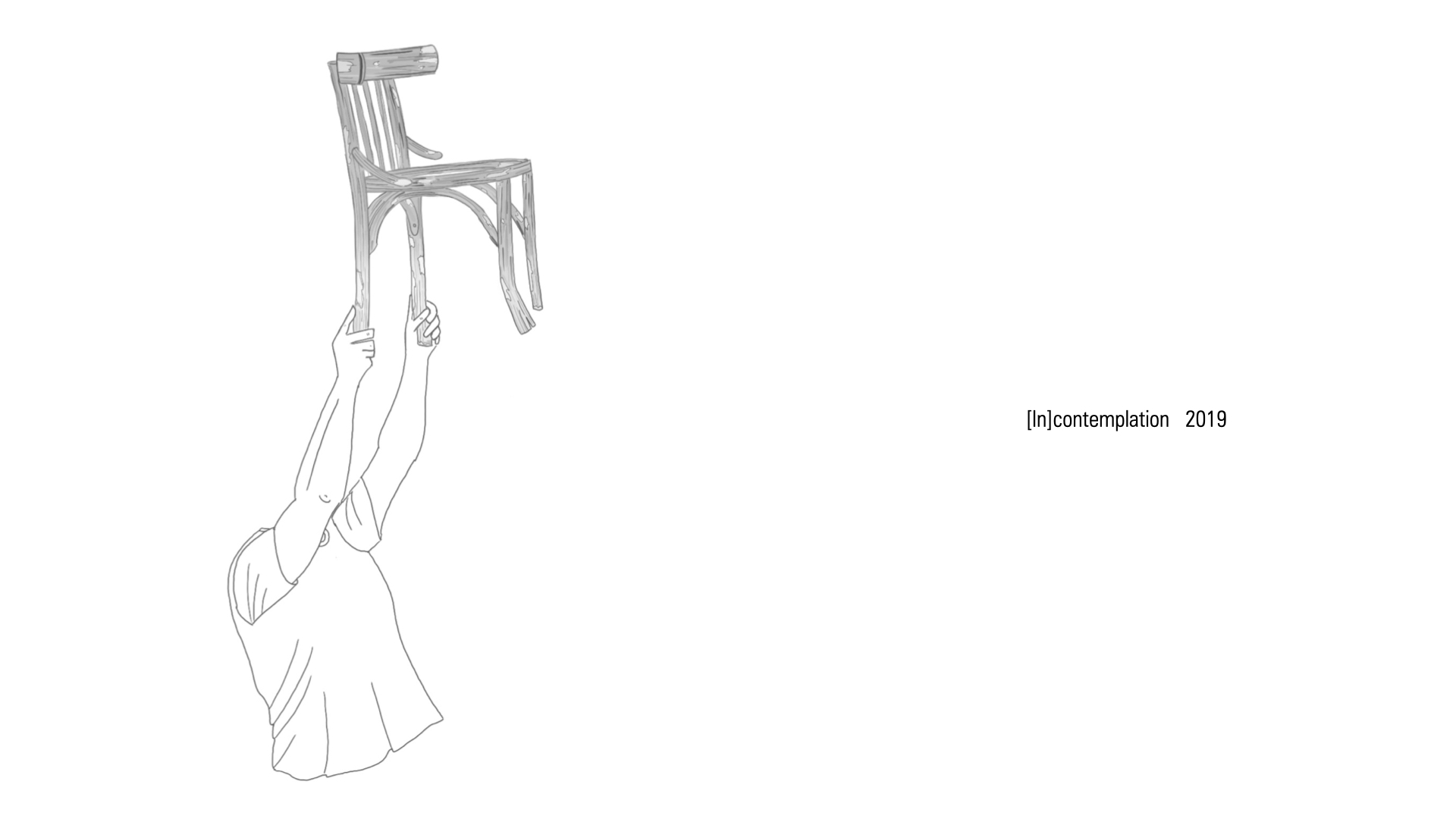


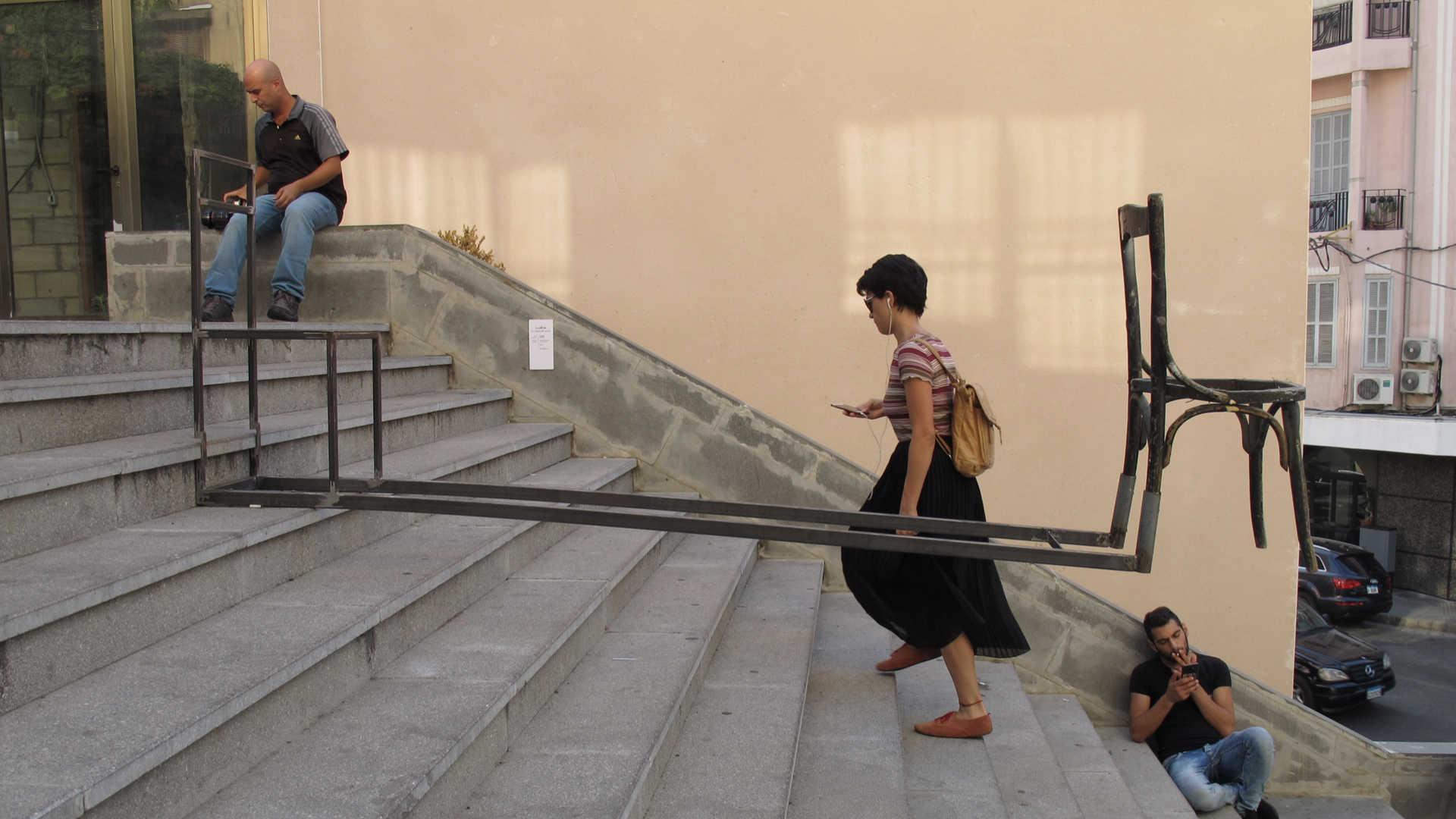
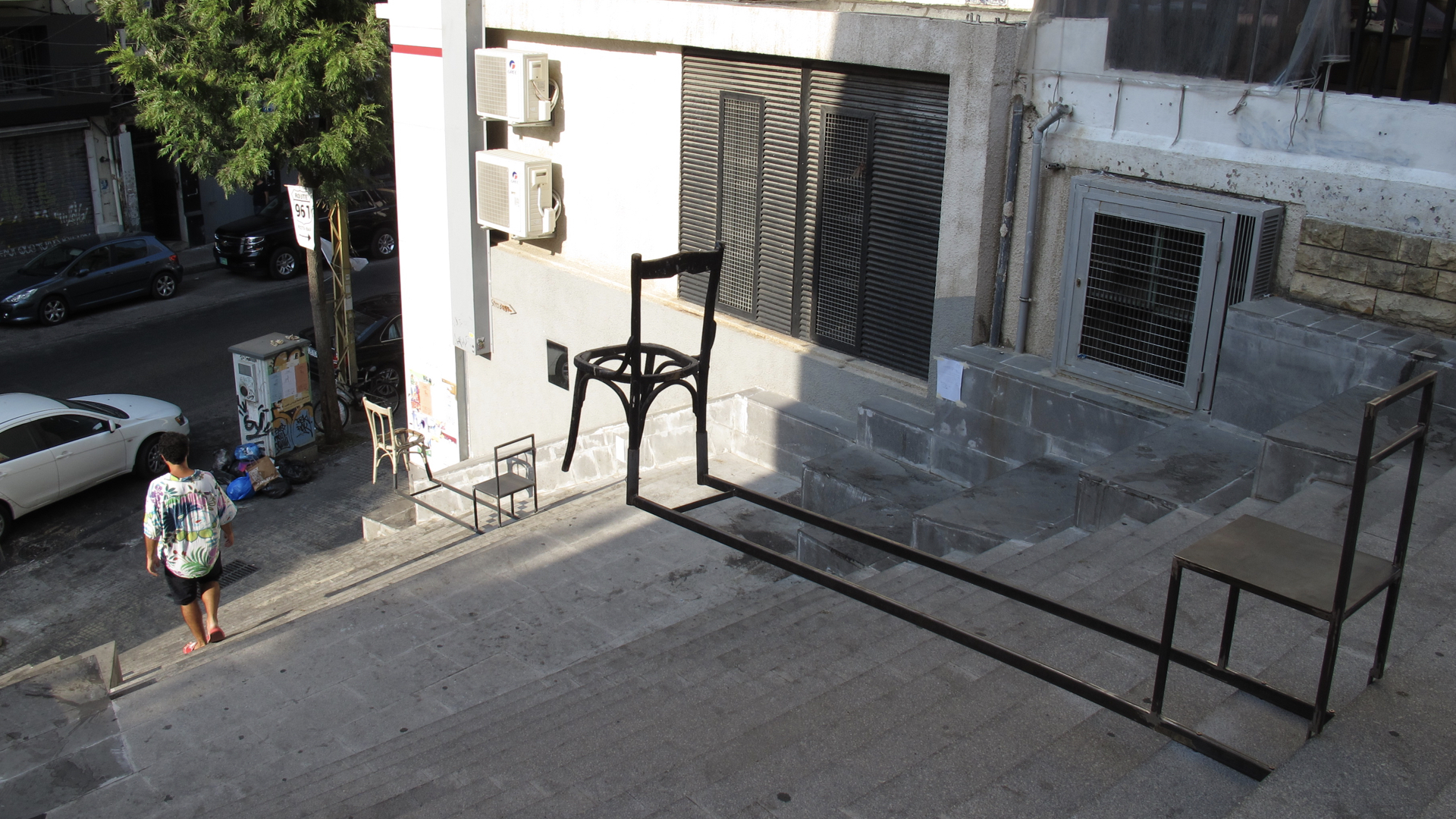
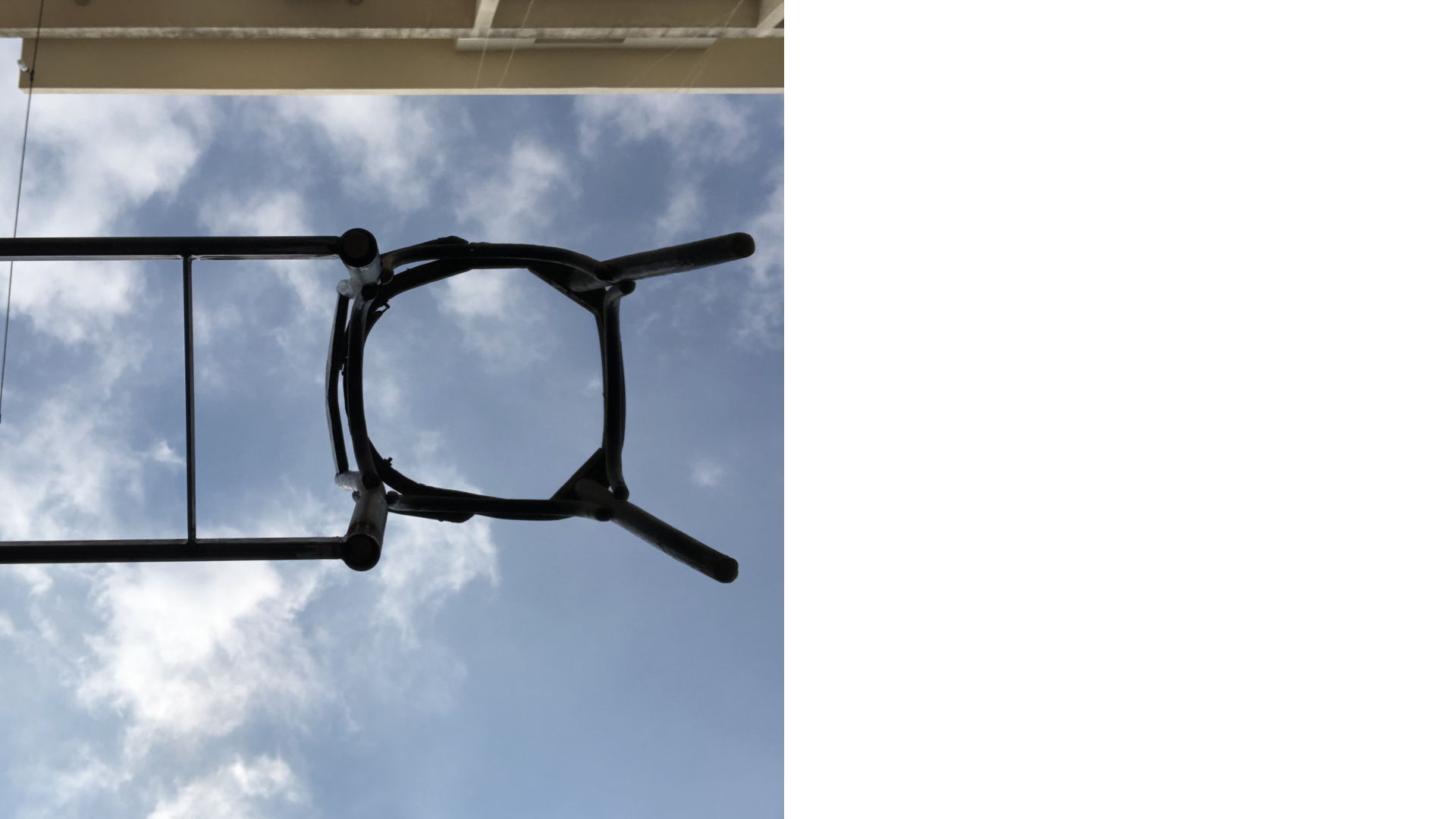


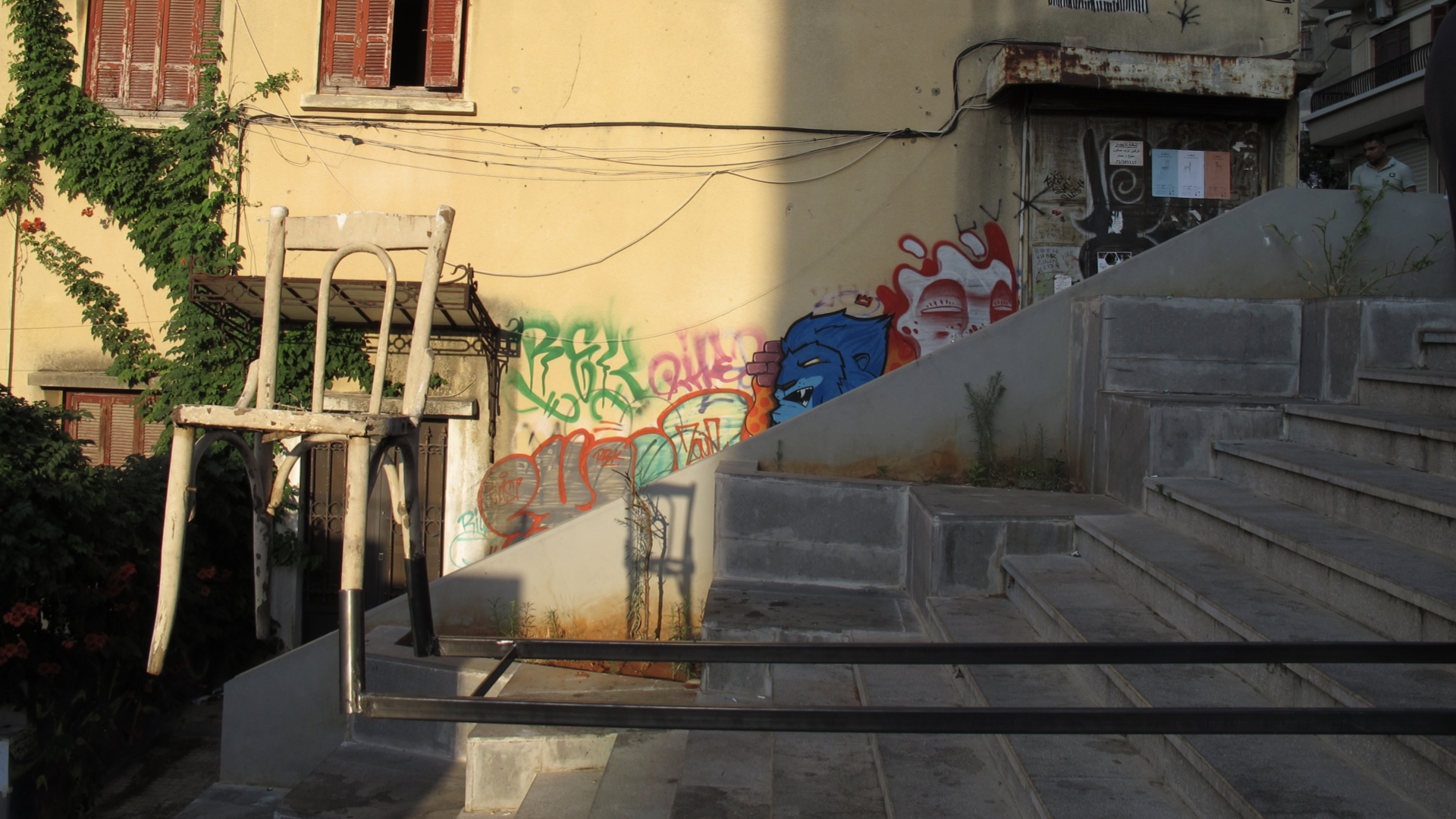

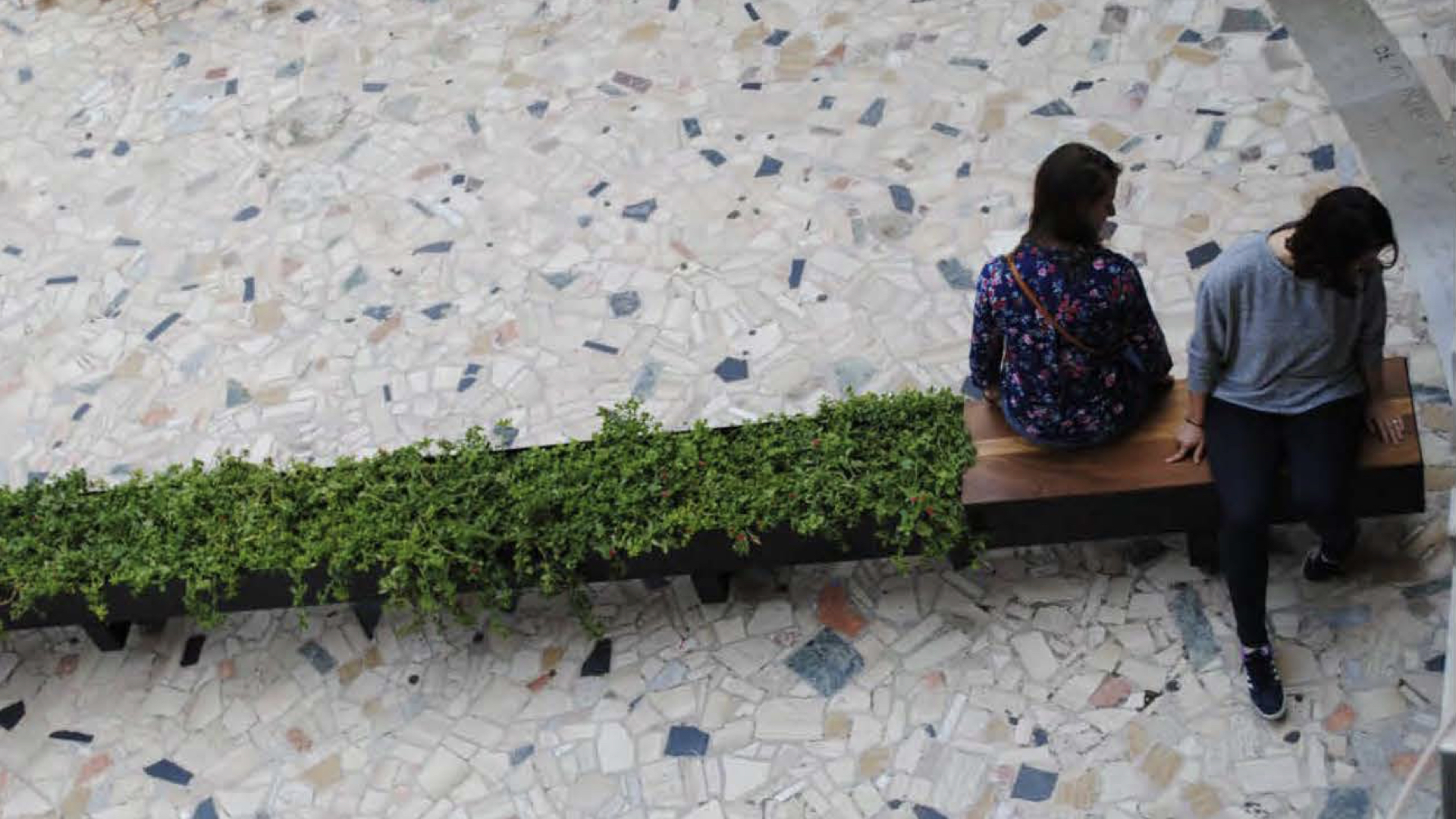
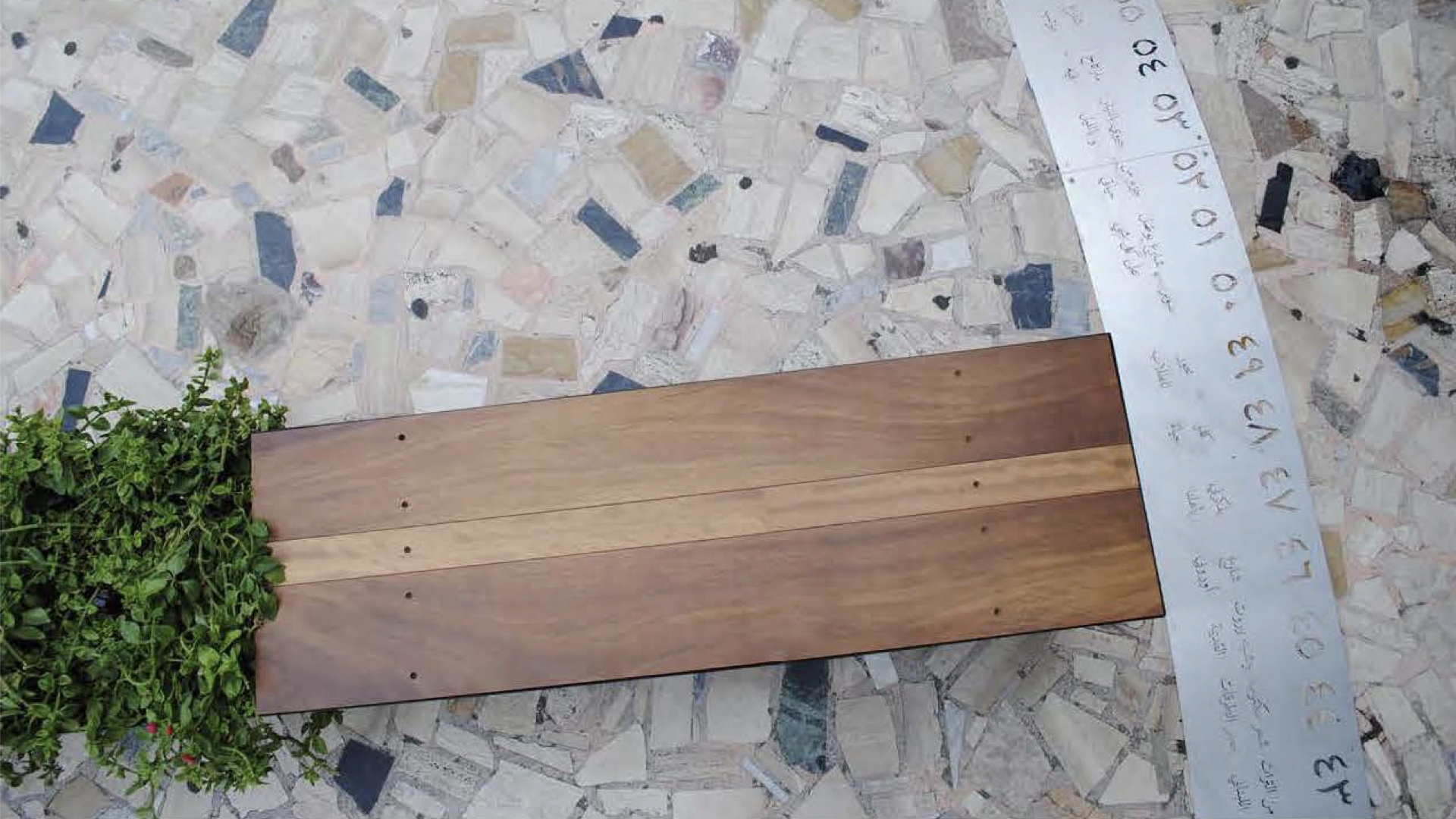
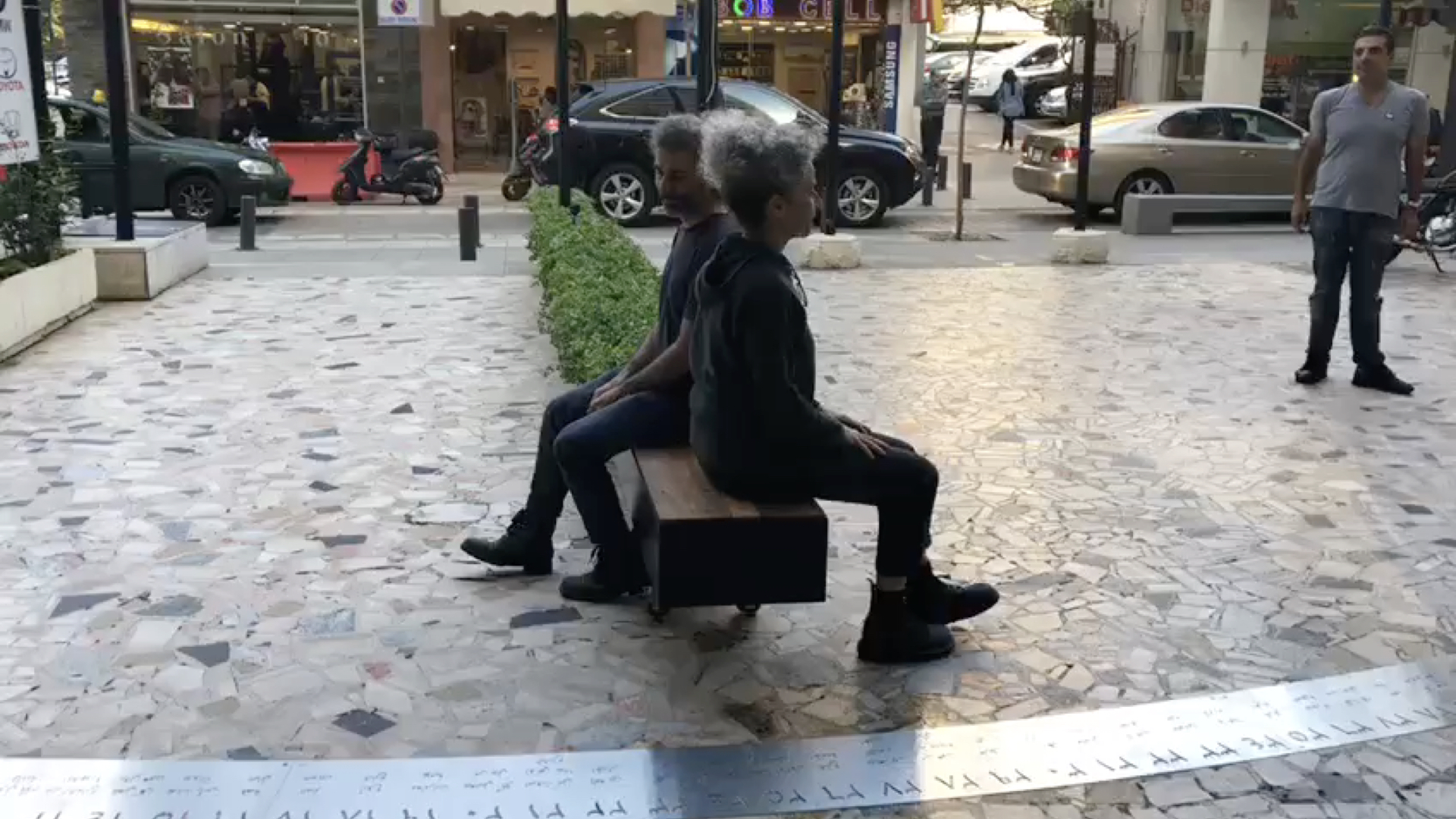
Installations in order of appearance:
[In]contemplation / Stop Pushing Us Away
Abdo sat on a chair facing the ready-made grinder, placed on another chair, with a sign saying ‘zehtouna’ in Arabic, which can be interpreted as “stop pushing us away” or “we cannot take it anymore”. Every time a passer-by pushes the button on the grinder, he jumps, hence turning the passer-by into an active participant.
A woman who was walking down the stairs saw him and encouraged him to move to the street pavement and reach a wider audience by telling him that “what you are doing is very political.” This performance re-enacted the private sector’s takeover of the city, allowed by the government, disabling citizens from profiting from their fundamental rights.
The political is linked to the city and how institutions control each aspect of our life (de Certeau 1984). The political also means that we can resist the existing state of affairs by making use of common tactics and transforming them into our own tactics established at our scale, to trigger engagement. It is just enough to incite their curiosity, enough to ask a question, to think about it, to talk about it with their friends and families later during the day, and provoke a discussion that could potentially lead into an awakening, a realization that this performance was a reaction to something we are accustomed to, but which we should resist.
Studio: Architectural Association Visiting School Beirut AAVS 2019.
Co-taught by Rana Haddad and Pascal Hachem.
Student’s name: Abdo Kanachat.
1 Acte / 2 Pieces
Théâtre de Beyrouth. Previously a BMW repairs pit, transformed during the sixties into a theatre. The arabic spoken plays gradually replaced the french repertoire. It is in this premise that the arabic / lebanese language specific to the theatre was born. During the war it had intensive experimental activities that were never documented. It used to be the last independent theatre that existed in Beirut. It represented people’s voice.
In October 2000 the ‘Theatre de Beyrouth’ invited us to be part of shams annual festival. We took an armchair from the theatre, placed it in the window and had it cut in two very slowly! This armchair has been there for 36 years, placed but not fixed, next to the lateral wall of the theatre. It took us a month to have it cut in two. The story of this armchair is not an isolated one, it is part of stories collected in the quarter of ain el mraissé and others that came out from the theatre itself. We distributed a tale per day, a flyer per day. Here is one of them: article n#3: in case of a censorship infringement, the representation of the play will be banned and the theatre will be closed for a year, as a decision taken by the head of the general security department. The accountable will incur a prison penalty that can vary between 1 to 3 years, and a fine of 5 thousand to 15 thousand lebanese pounds [approximately 3 to 6 euros]. The minimal charge cannot be less then a month…
The chair generated a narrative. People walking by made up their thoughts and opinions about what was going on. They initiated a “save the chair” campaign. The street vendors and people from the neighborhood that were always intimidated by the theater and never dared to enter it, were intrigued and were attracted in to see the festival. The outcome was a modest success with a full newspaper coverage, a sponsor for a publication that include all people’s reactions and involvements, with of course, -it goes without saying- a self censorship, and with an 18 months extra to the life span of the theatre. The latter was not our aim but rather an outcome from people’s reaction to the scene of the chair being cut in two. And in some way it became iconic.
In such work the narratives play a crucial role, whereby a discourse will always be there when a problematic has been erased.
Installation by Rana Haddad and Pierre Hage-Boutros in collaboration with the Atelier de Recherche, ALBA, 2001.
Book and leaflets’ team: Rana Haddad, Pierre Hage-Boutros, Gregory Buchakjian, Danielle Kattar, Sana Asseh, Carma Tohme.
Radio Silence
The project aims to create an awareness of the surrounding environment in Horsh Beirut. Horch being a pine trees’ public park that stayed closed for more than 30 years, since it was bombarded in 1982 and the pine trees got all burned out-. It tackles a threshold within the site using a common playground game that is yet absent from the Horsh: the seesaw. Radio Silence questions the barrier that exists between the different user groups by placing a seesaw as a gate belt on a permanently locked door. Thanks to the children, that have nothing to do with sectarianism in the first place, by calling each other up to play with the seesaw, they were able to eradicate the effect of the gate. The gate became suddenly invisible.
Studio:BePublic/Silence 2016.
Co-taught by Rana Haddad and Joanne Hayek, AUB.
Students names: Betina Abi Habib, Zeina Bekhaazi, Souha Boumatar, Mario El Khouri, Karen Madi.
Take A Breather / Basket Ball Net
This project intervenes in an area that is already rich with its own unique and informal appropriations and culture. the streets of karm el zeitoun were chosen as a site due to their cultural significance and their unfamiliarity to outsiders.
The aim of the project was to create an interface with the user by bringing out elements of everyday life that would have been otherwise disregarded. the project focuses on the notions of the public and the private, the leftover spaces and the spontaneity of everyday life, highlighting the very thin limit between private and public, indoor and outdoor.
The basketball net was on of 7 different installations and many performance/installations like the crates’ play that were taking place along the whole studio.
Studio: BePublic/Appropriation 2018.
Co-taught by Rana Haddad and Pascal Hachem. AUB.
Students names: Mohamad Chami, Tala Salman, aha Barazy, Andrea Chaanine.
Air Rights
A vertically mobile chair which ascends up an electricity pole. The pole exists on the edge of a security zone which dictates several conditions that include no visual access towards it. Due to these security issues a chair enjoys the full visual air rights of the city but you are not permitted to do so.
A person on the ground is invited onto the chair and sits on it thinking he or she will ride up to the top and enjoy a panoramic view. However, when occupied, a system of sensors inhibits the chair from reaching the maximum height. The ride deliberately frustrates the user and encourages him to question his air rights within the conflicted city of beirut.
Since we are all human after all, we felt like breaking the rules whenever circumstances allowed us. To do so, we needed to monitor the patrolling security officers that were going round the block surveilling our actions.
We needed to ensure 18 signatures from municipalities and public sectors for only a one day installation.
Studio : Air Rights, BePublic/ Public Beirut, 2012.
Co-taught by Rana Haddad, Carole Levesque, Sandra Richani, AUB.
Students names: Youssef Ibrahim, Jana Aridi, Loulwa Achkar, Thea Hallak, Micheline Nahra.
[In]contemplation
The common interest stemmed out to investigate the lack of place that is provided by the city for the youth without having to spend any money that is how we chose the most public of all places in Mar Mekhail, Younes Jebayli staircase, known as the Vendôme staircase. The project entitled [In]contemplation, culminated with five different pieces scattered along the stairway despite the uniqueness of each piece; each conveys the relationship to the city that does not want you to linger, in relation to its own context.
Studio: Architectural Association Visiting School Beirut AAVS 2019.
Co-taught by Rana Haddad and Pascal Hachem.
Student Name: Abdo Khanachat, Yara Kamali, Lina Badda, Ralph Karam, Jamie Lau, Sama Beydoun.
Between a Thought & Another
This installation on Jeanne D’arc street acts as a horizontal interactive memorial which incites pedestrians to interact with it and experience the public and private dichotomy of the street. The rotation of the installation highlights the causal and interdependent relationship between public and private as well as the past and present, expressing the inhabitants’ citations about what Jeanne D’arc street represents for them. All citations were carved on a stainless-steel metal sheet fixed to the ground. One could pedal in rotational movement while reading citations.
Studio: Between a Thought & Another, BePublic/Appropriation 2018.
Co-taught by Rana Haddad and Pascal Hachem.
Students names: Tima Rabbat,Mariya Zantout, Tala El Khatib, Jad Najm.
Nature’s Calling
“Nature’s calling: a play on senses” involved a clear attitude to ‘occupy’ empty plots of land within a dense city where public green space is rare and inaccessible. Students rooted a public telephone into a huge private, but unkempt overgrown plot within the city. The phone booth, a clear public street fixture that rings continuously until one leaves the street to pick up the phone managed to break the ‘private’ imaginary boundary edge. Instead of a person’s voice on the phone one hears a recording of nature sounds to reorient you into an abandoned overgrown plot. Behind the phone is a sunken seating area dug into the ground that allows you to sit with your eye at the level of the plants distilling the horizon of the city.
Can the city without planned public space overtake abandoned private land?
Studio: Nature’s Calling, BePublic/ Public Beirut 2012
Co-taught by Rana Haddad, Carole Levesque, Sandra Richani, AUB.
Student Name: Tracey Eid, Lamia Dabaghi, Hala Tawil, Mira Moussa, Sara Batal.